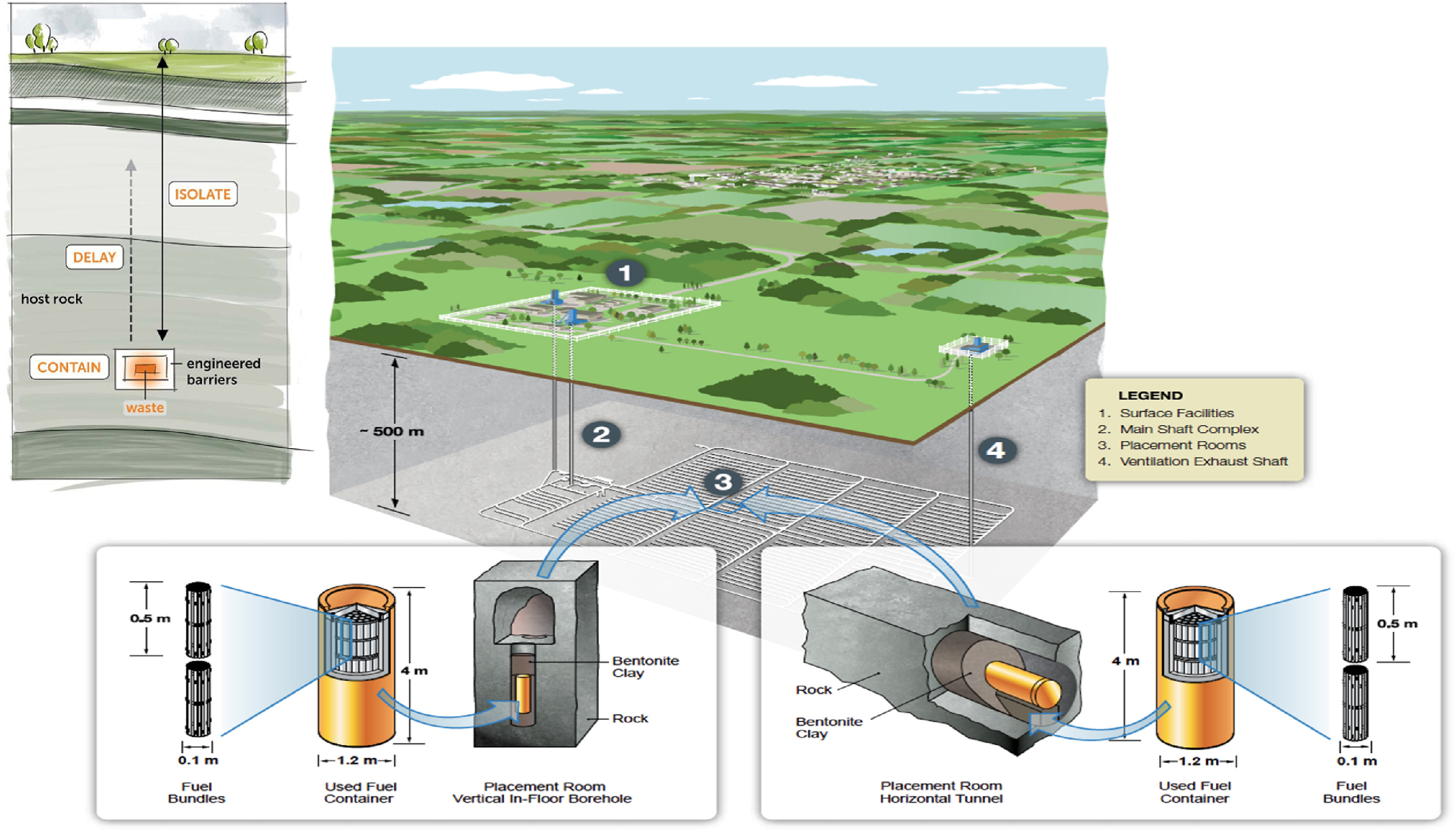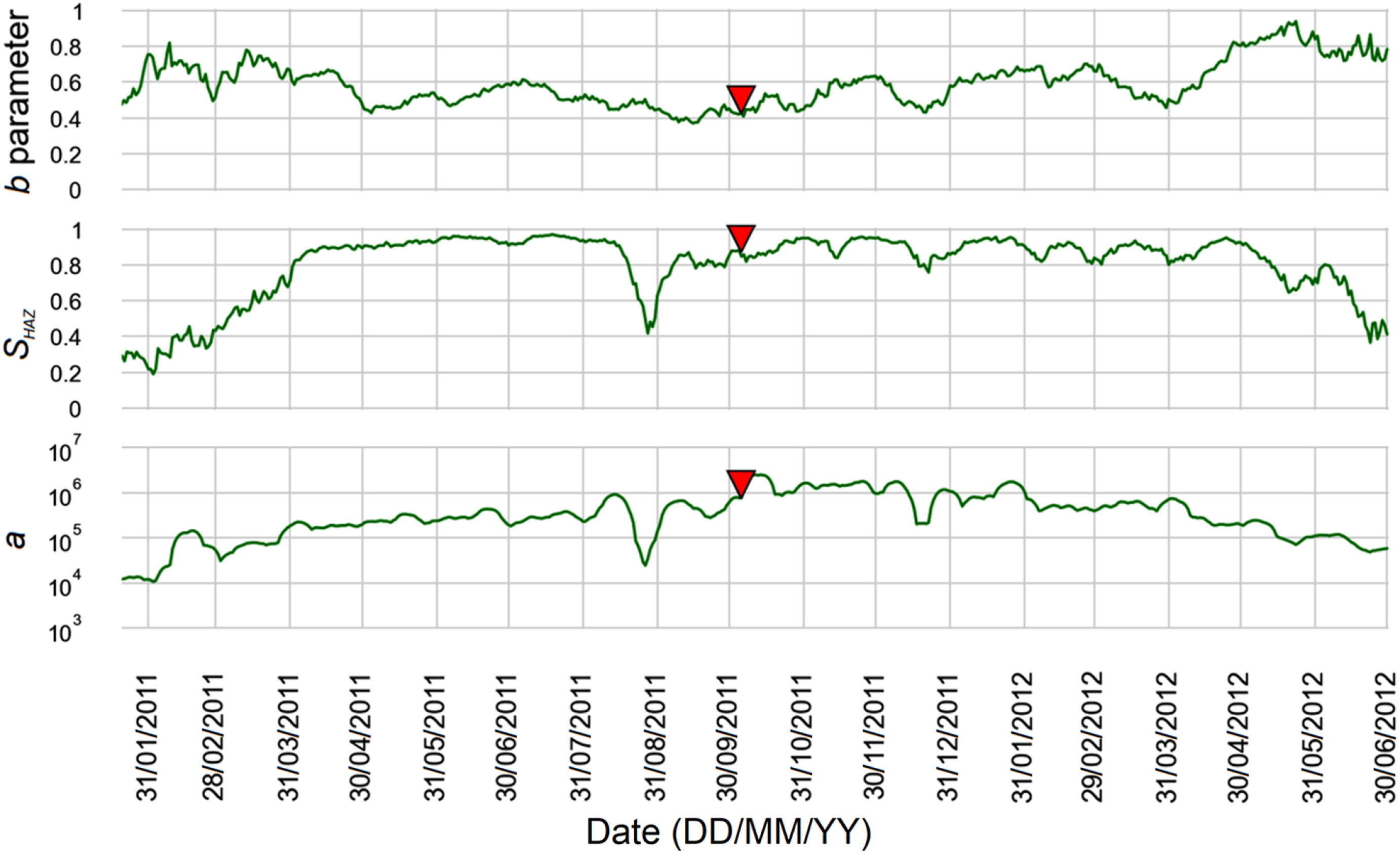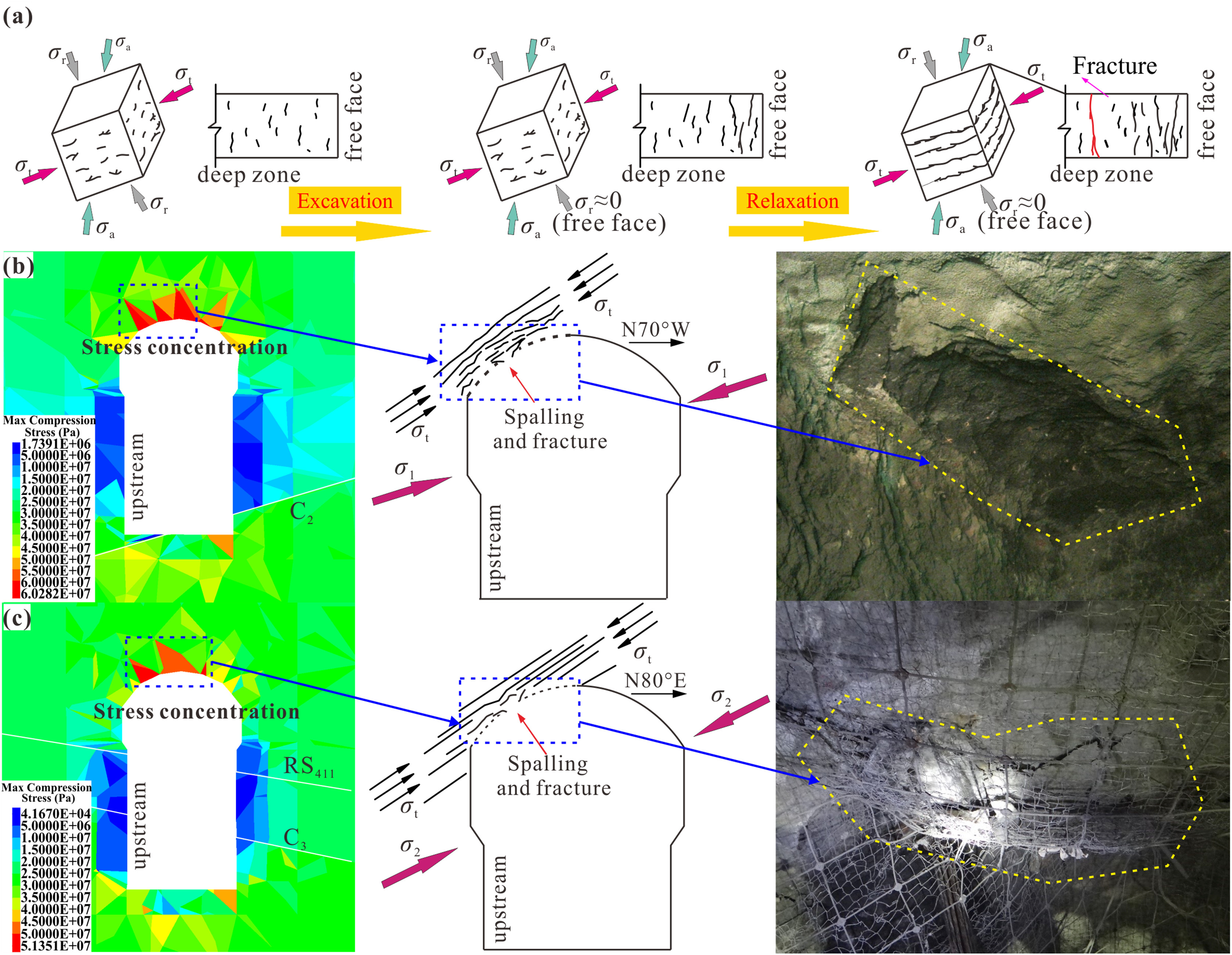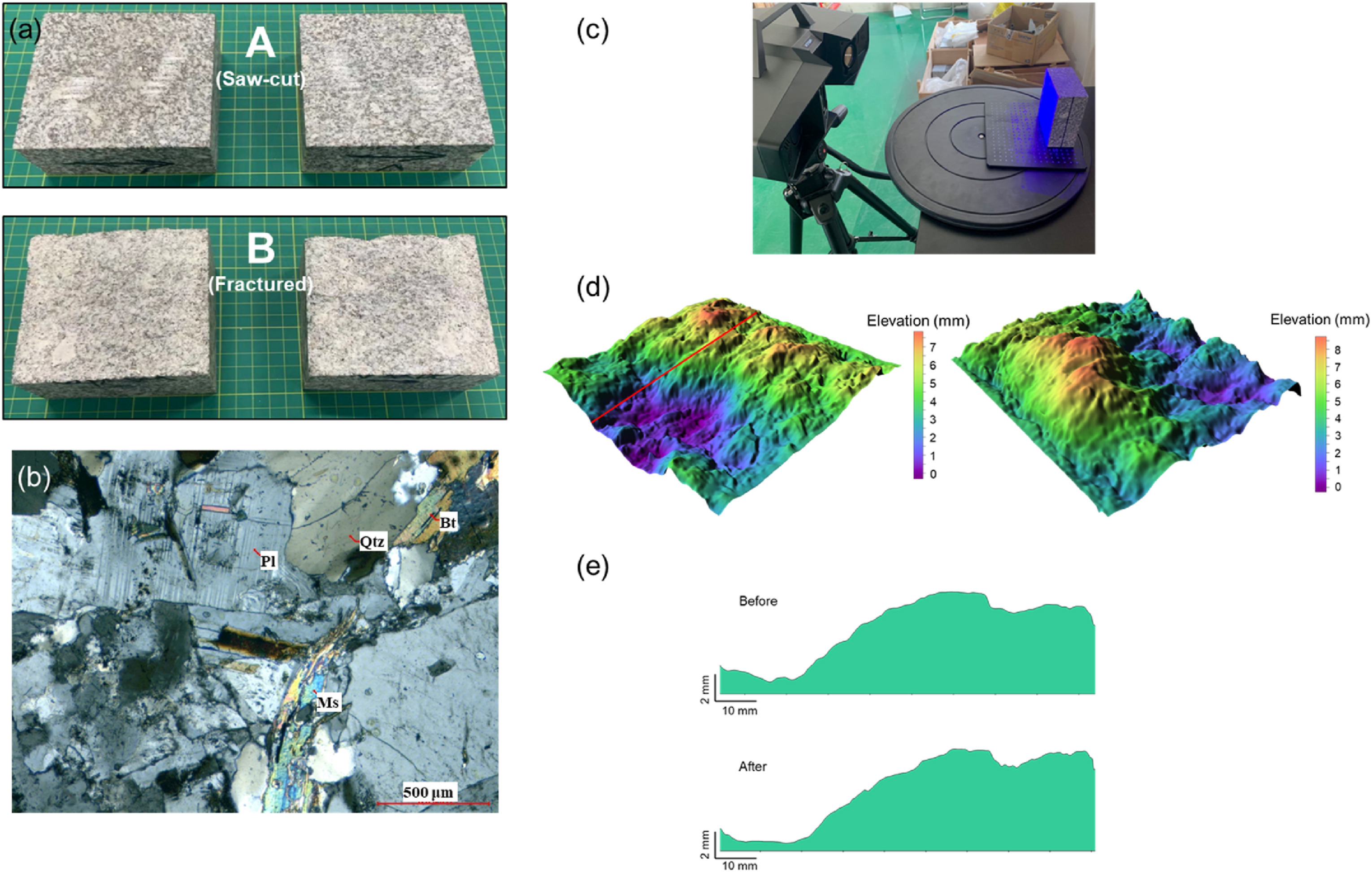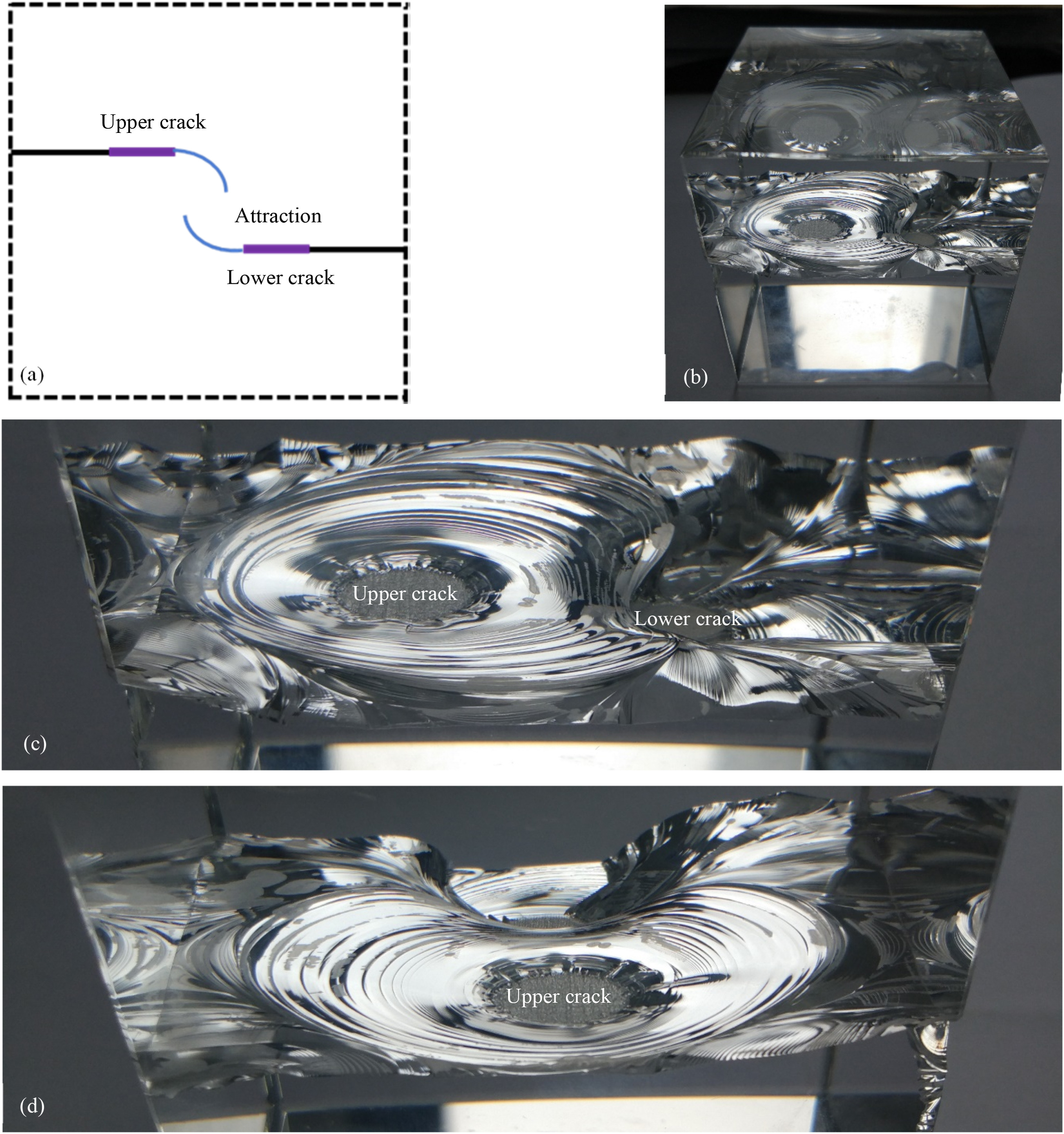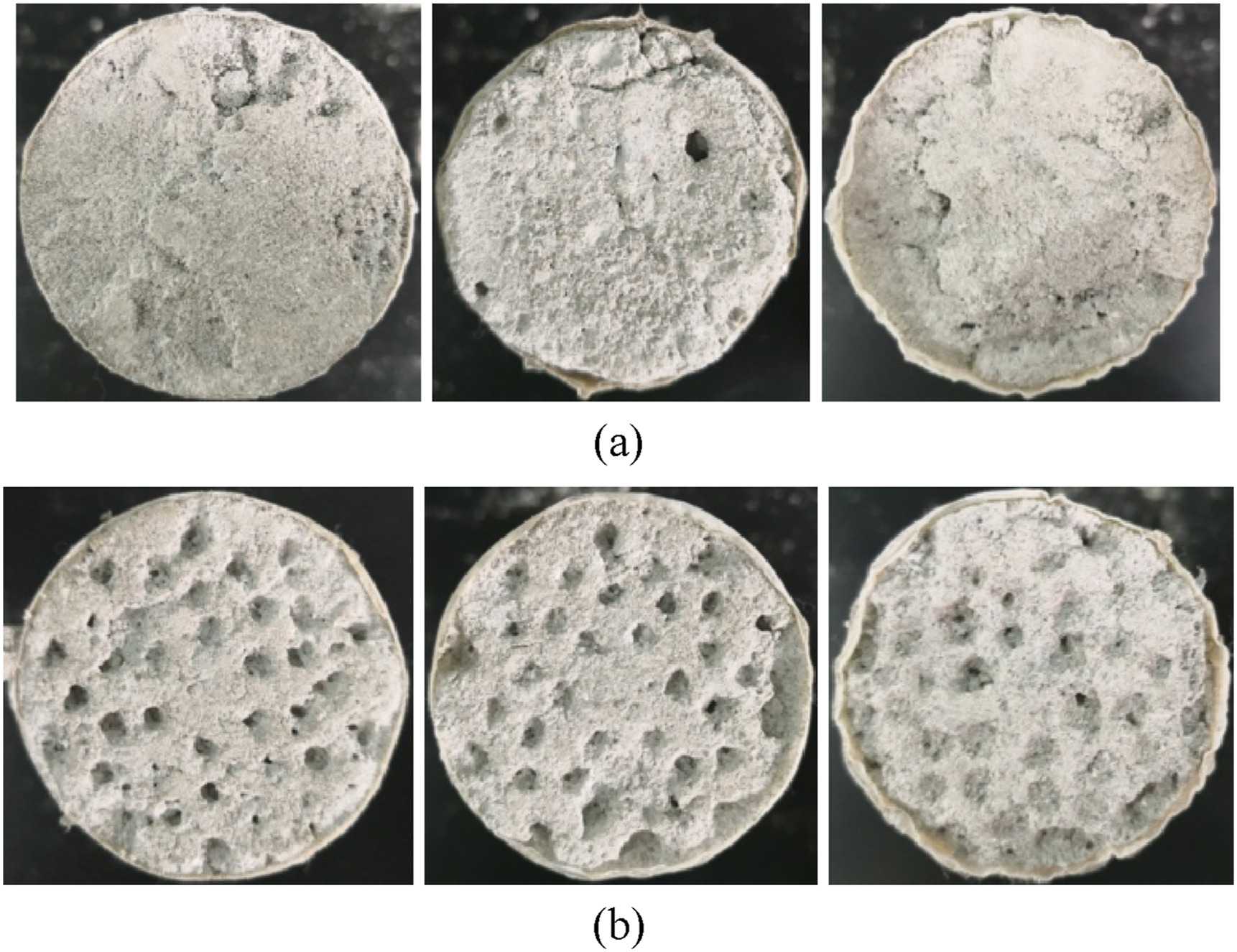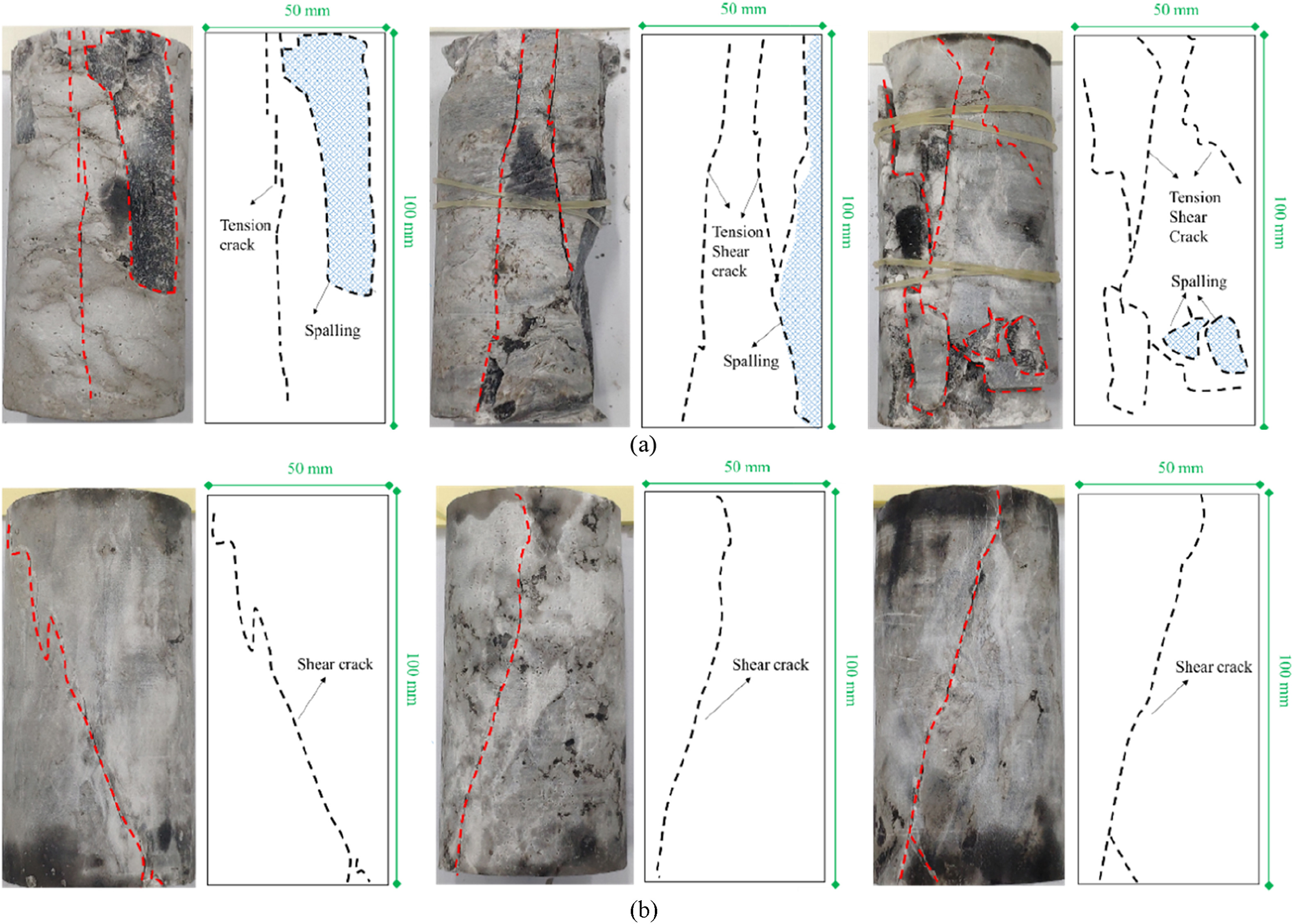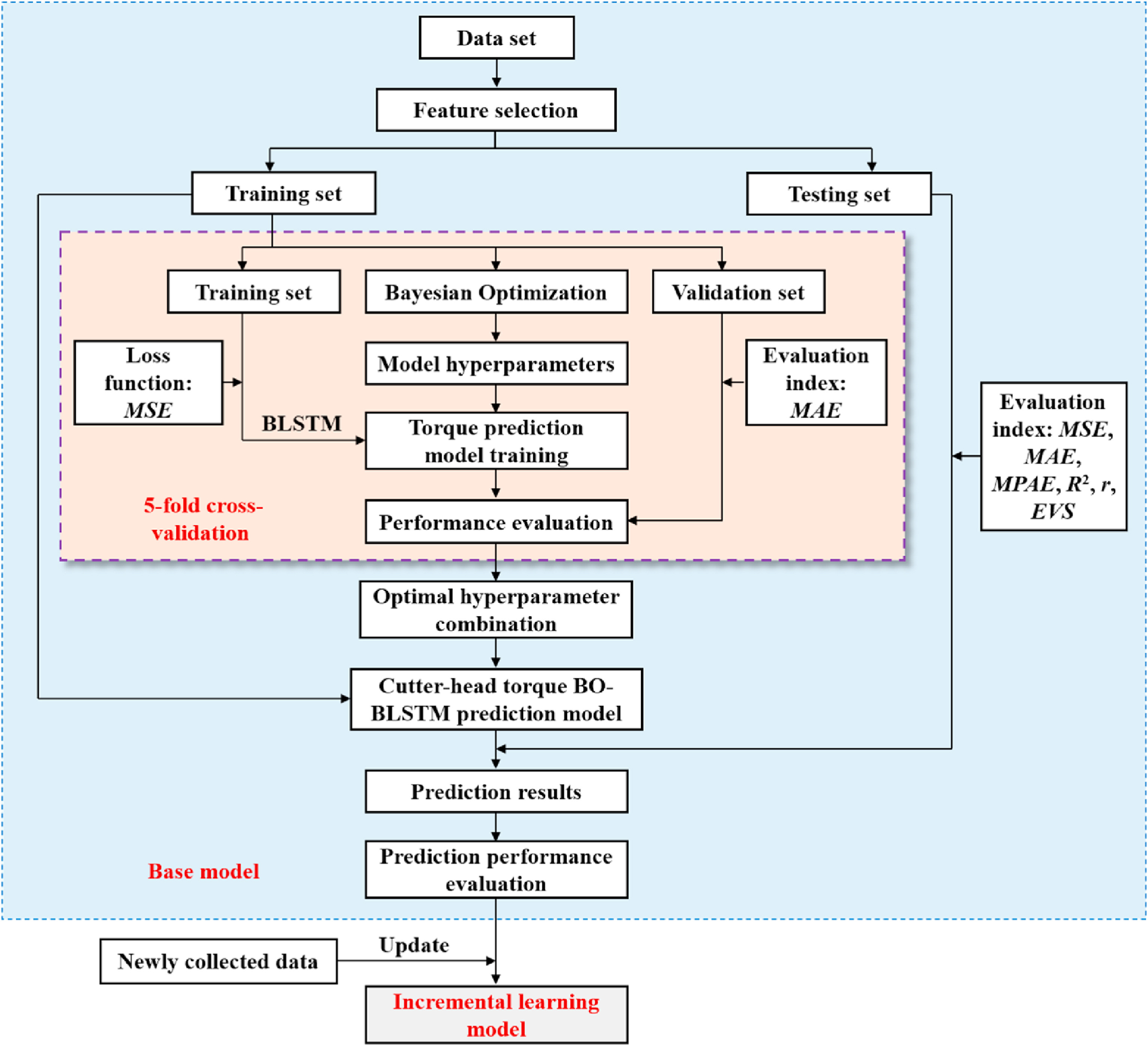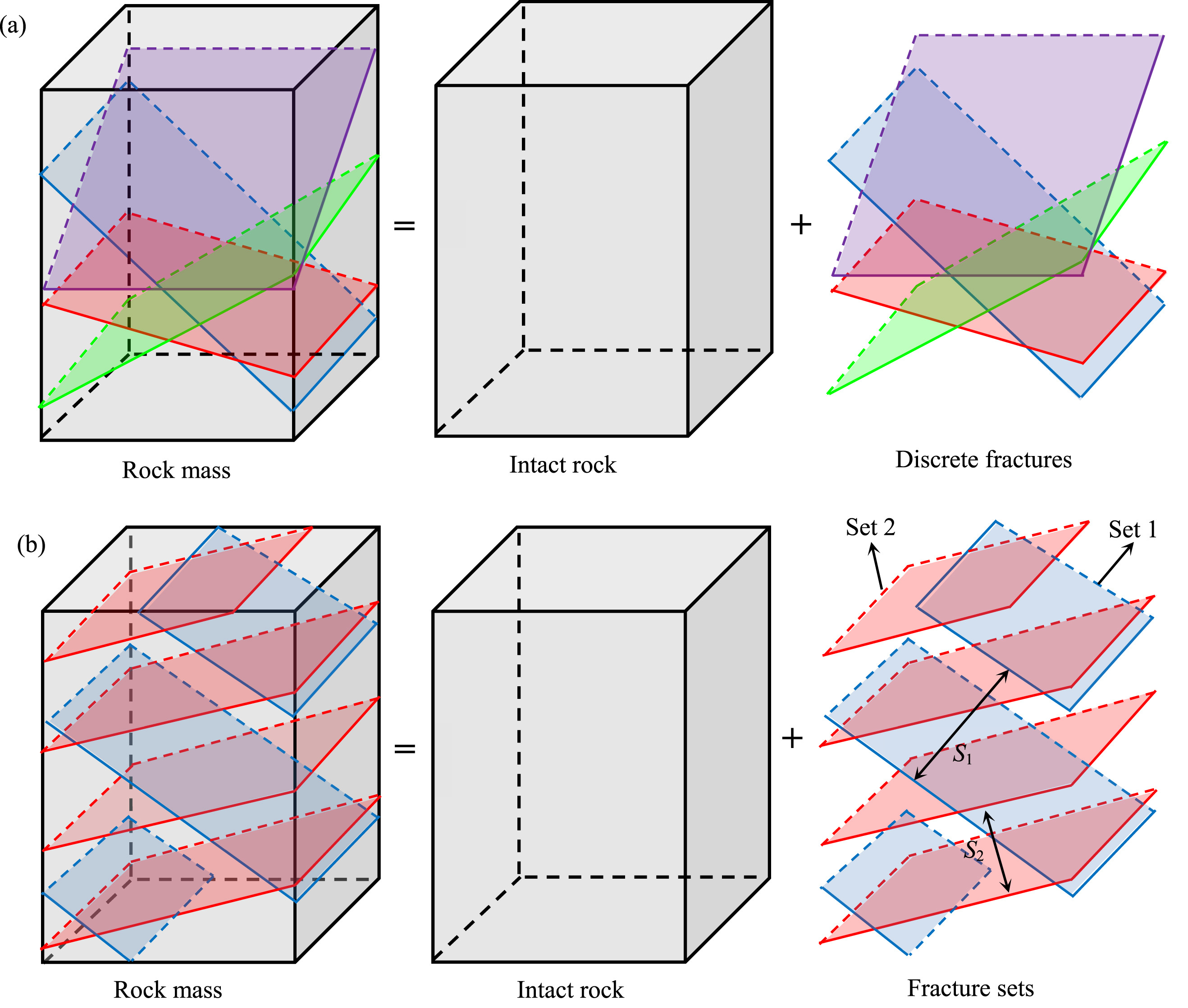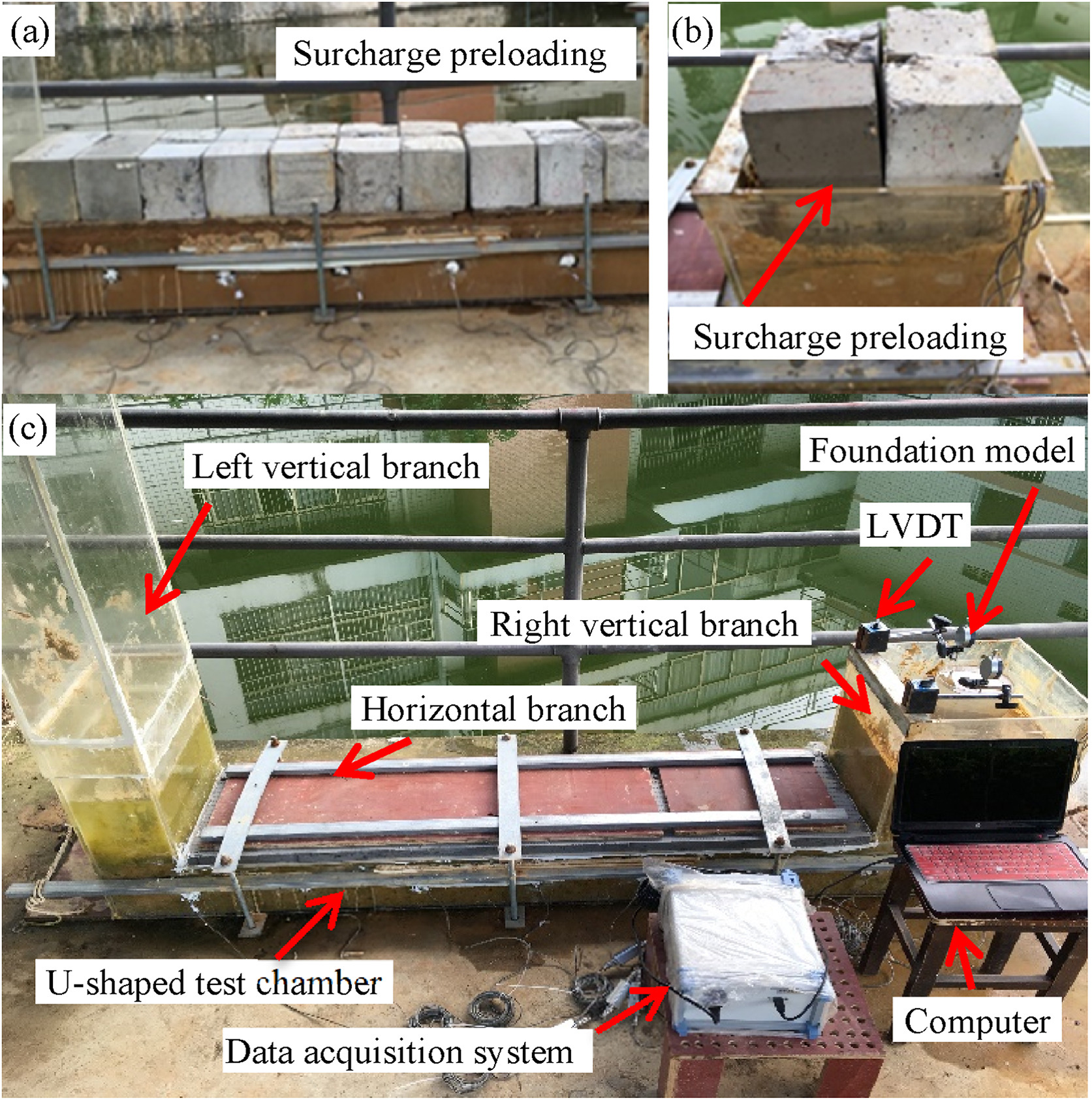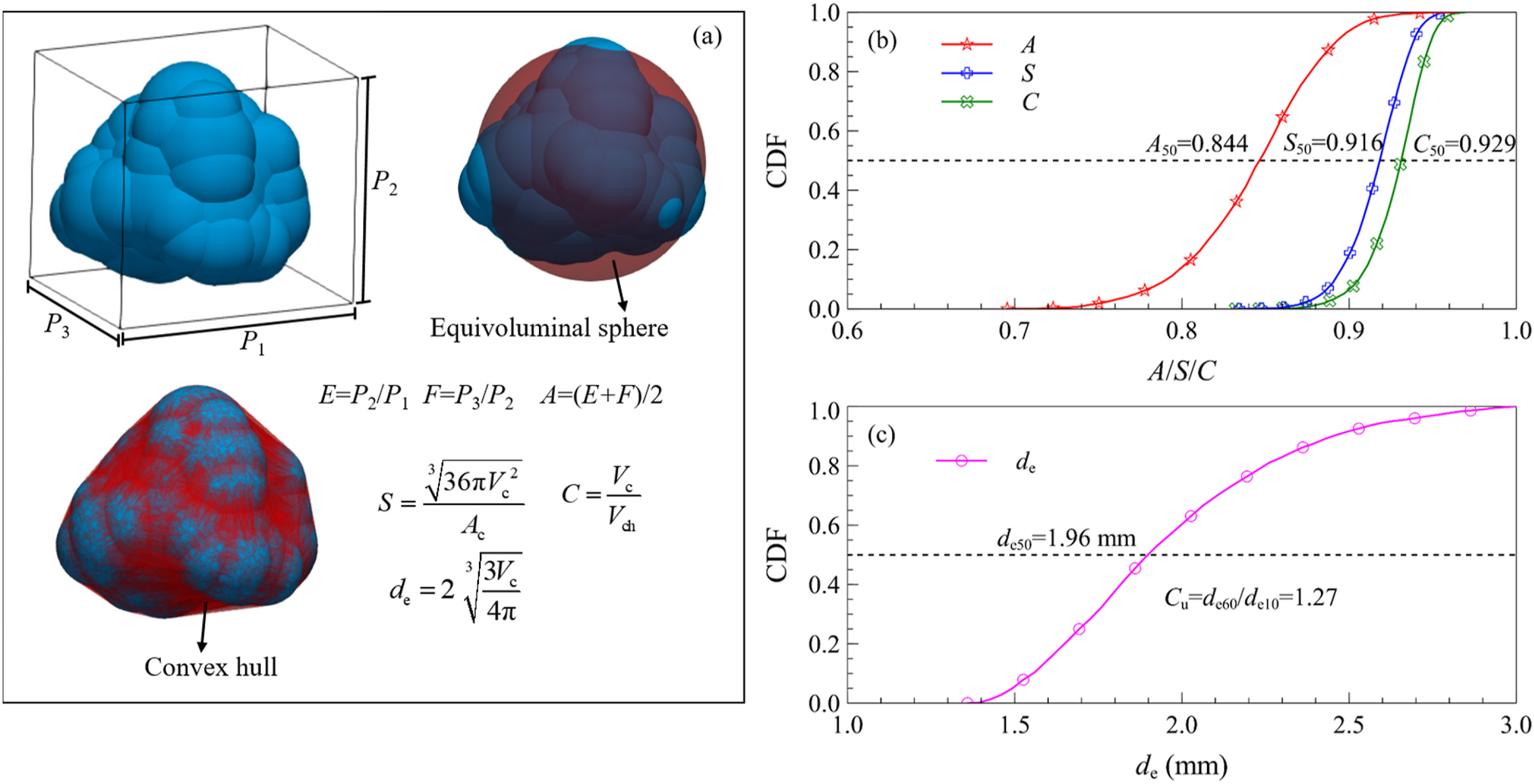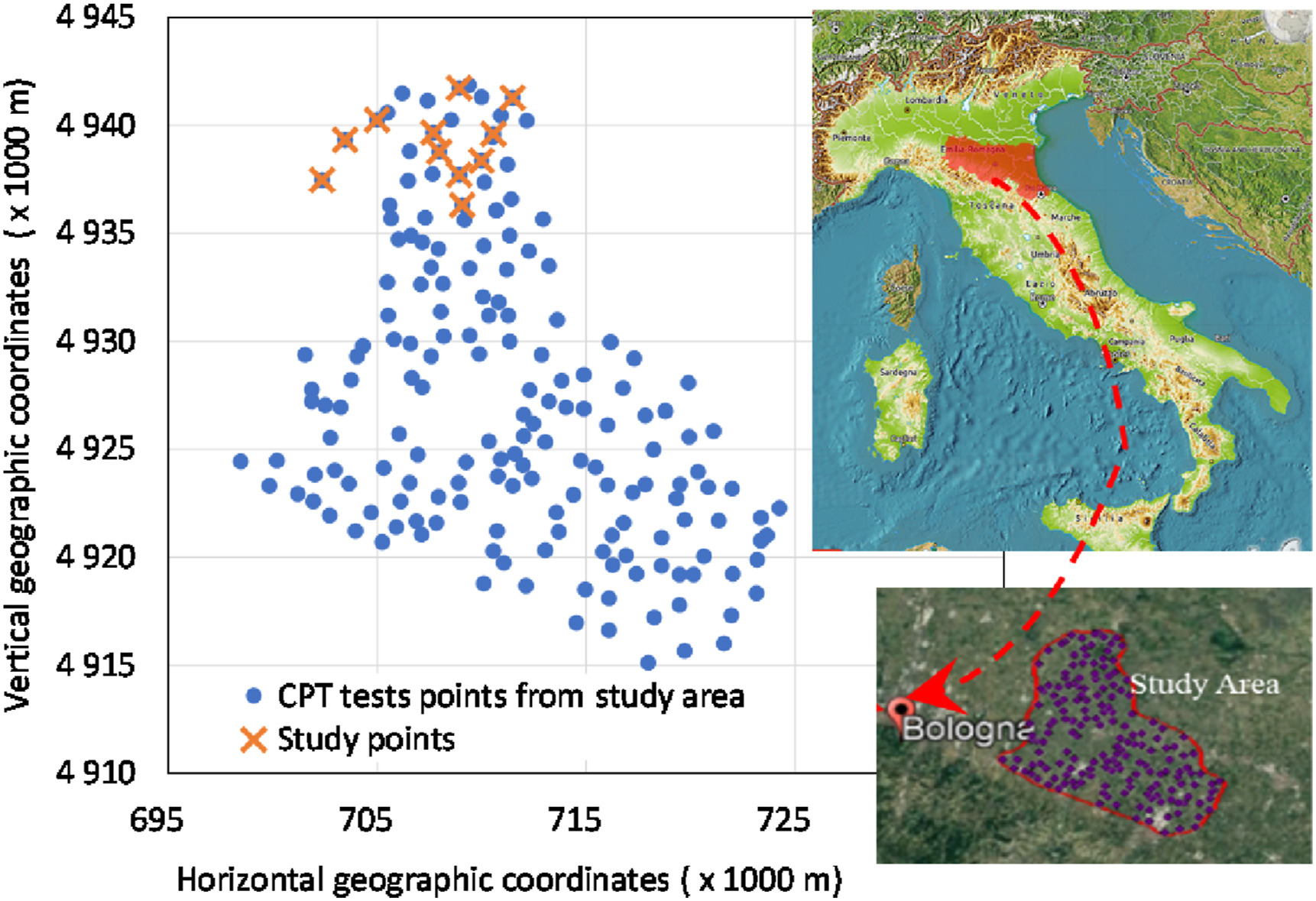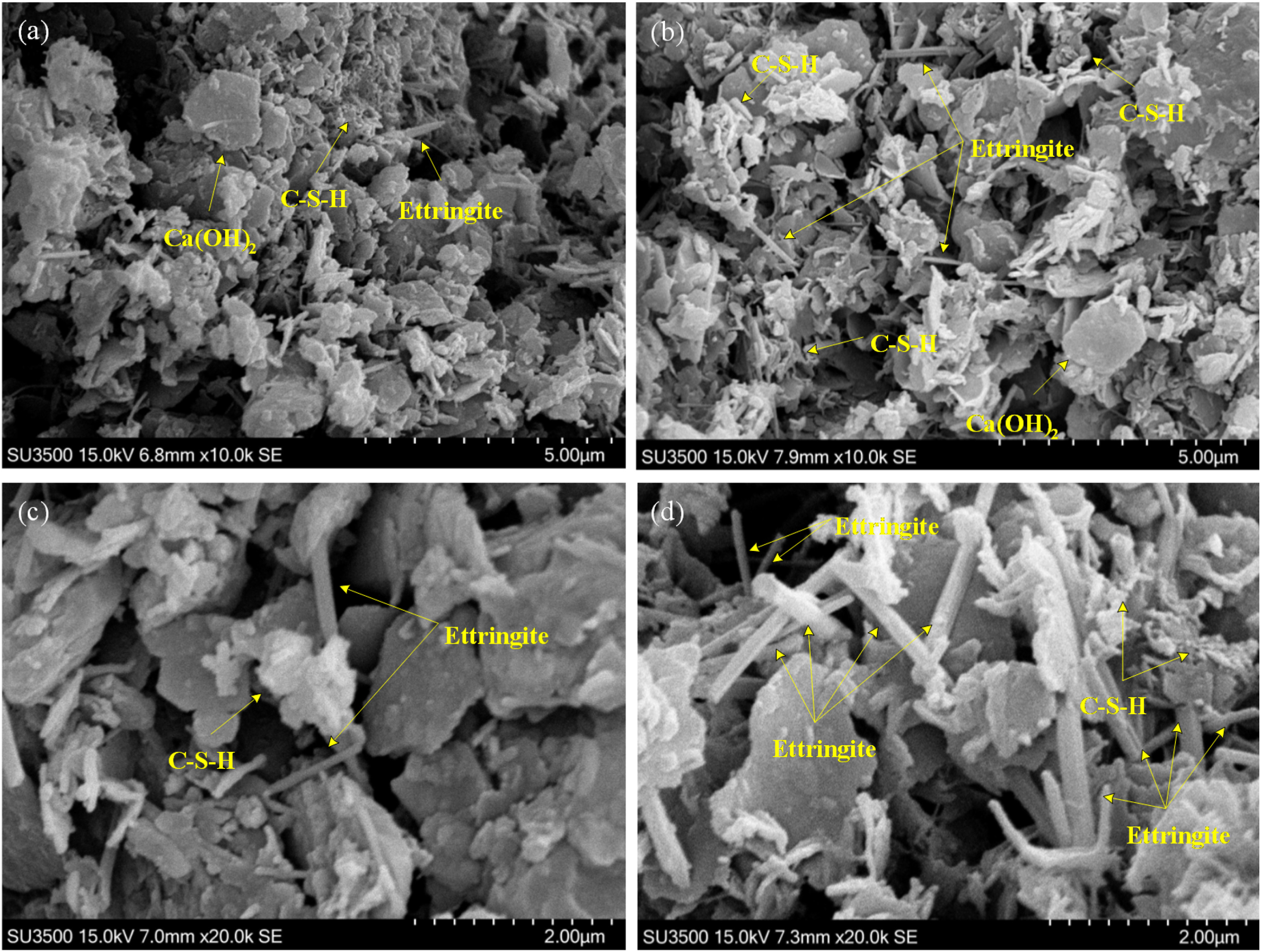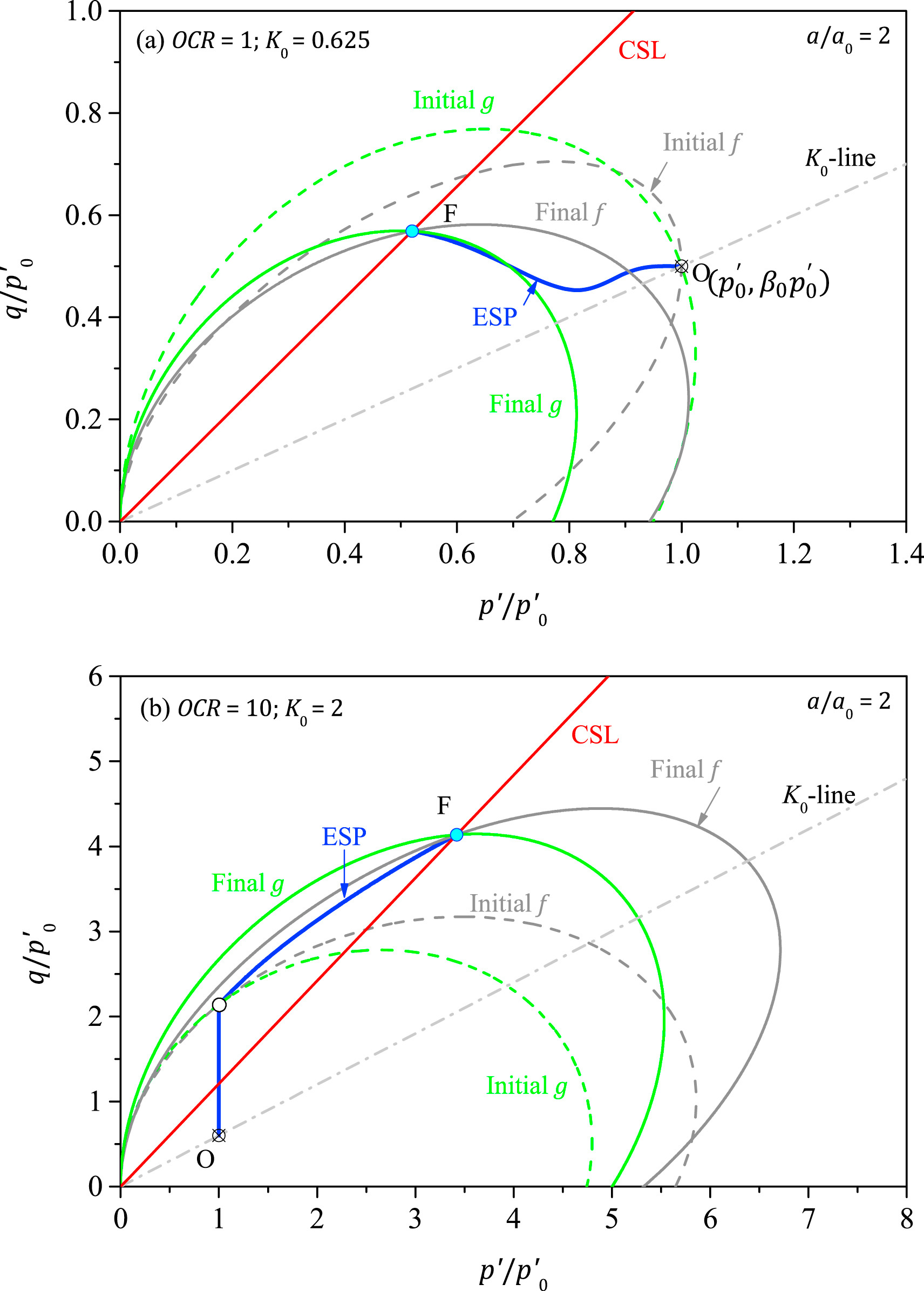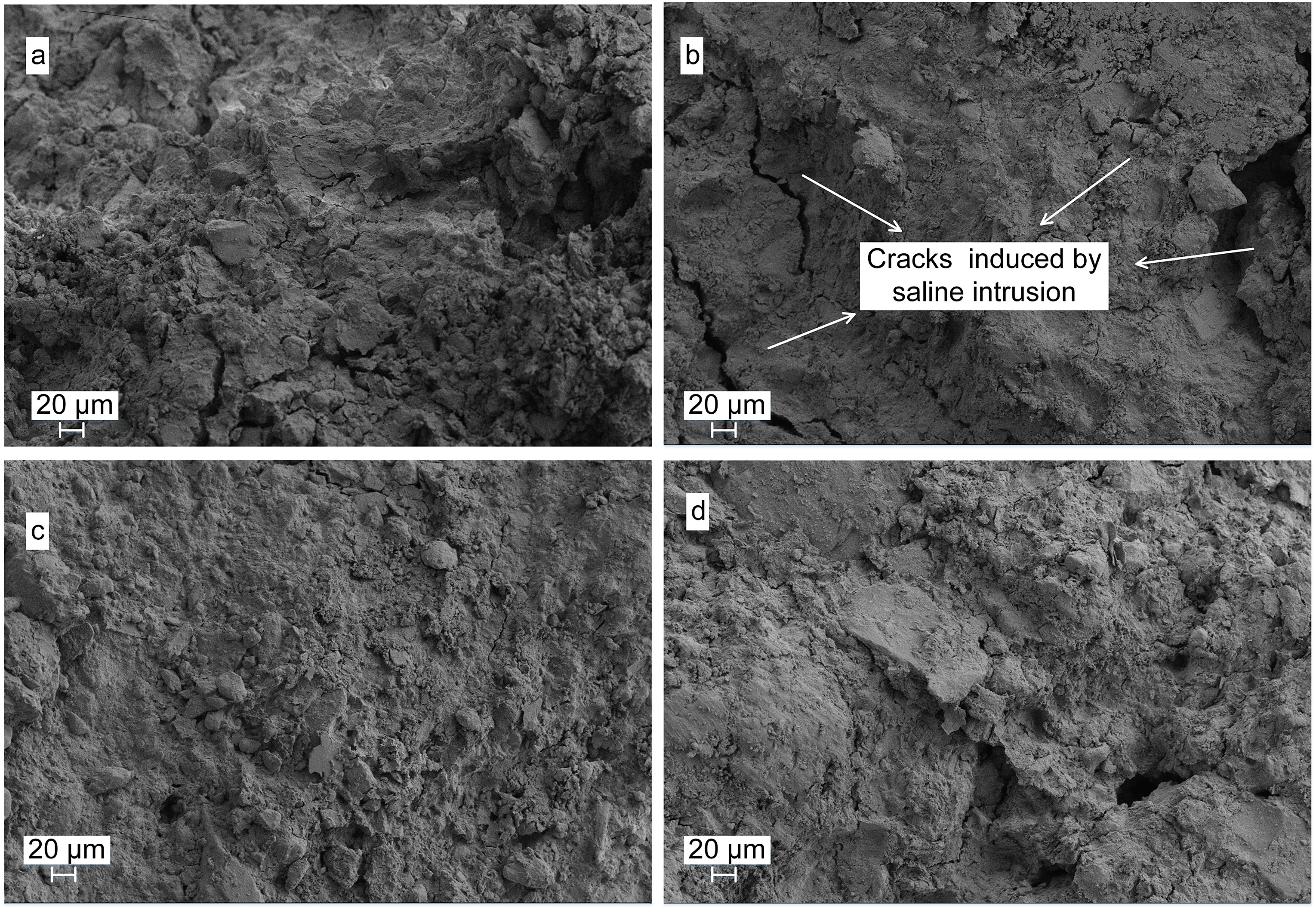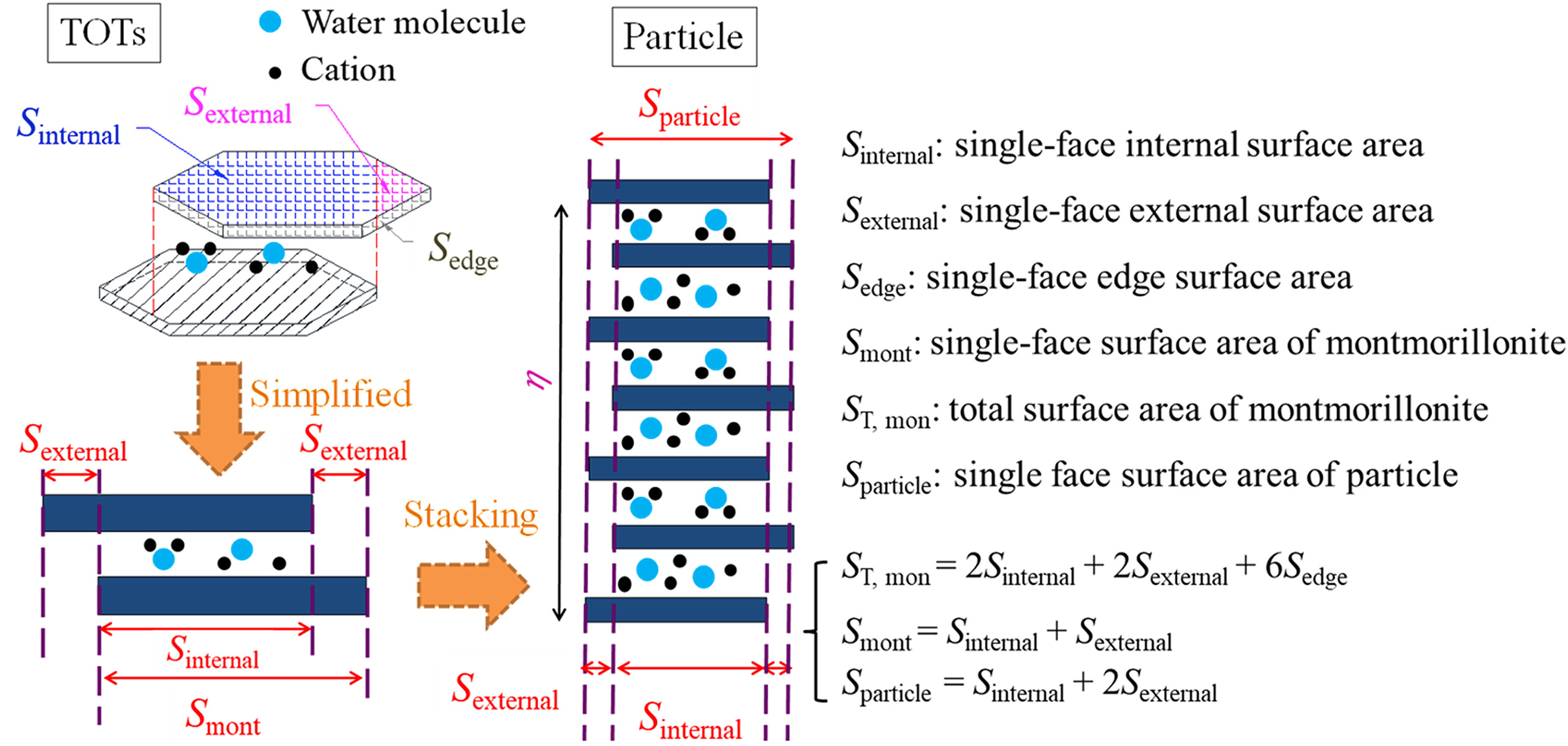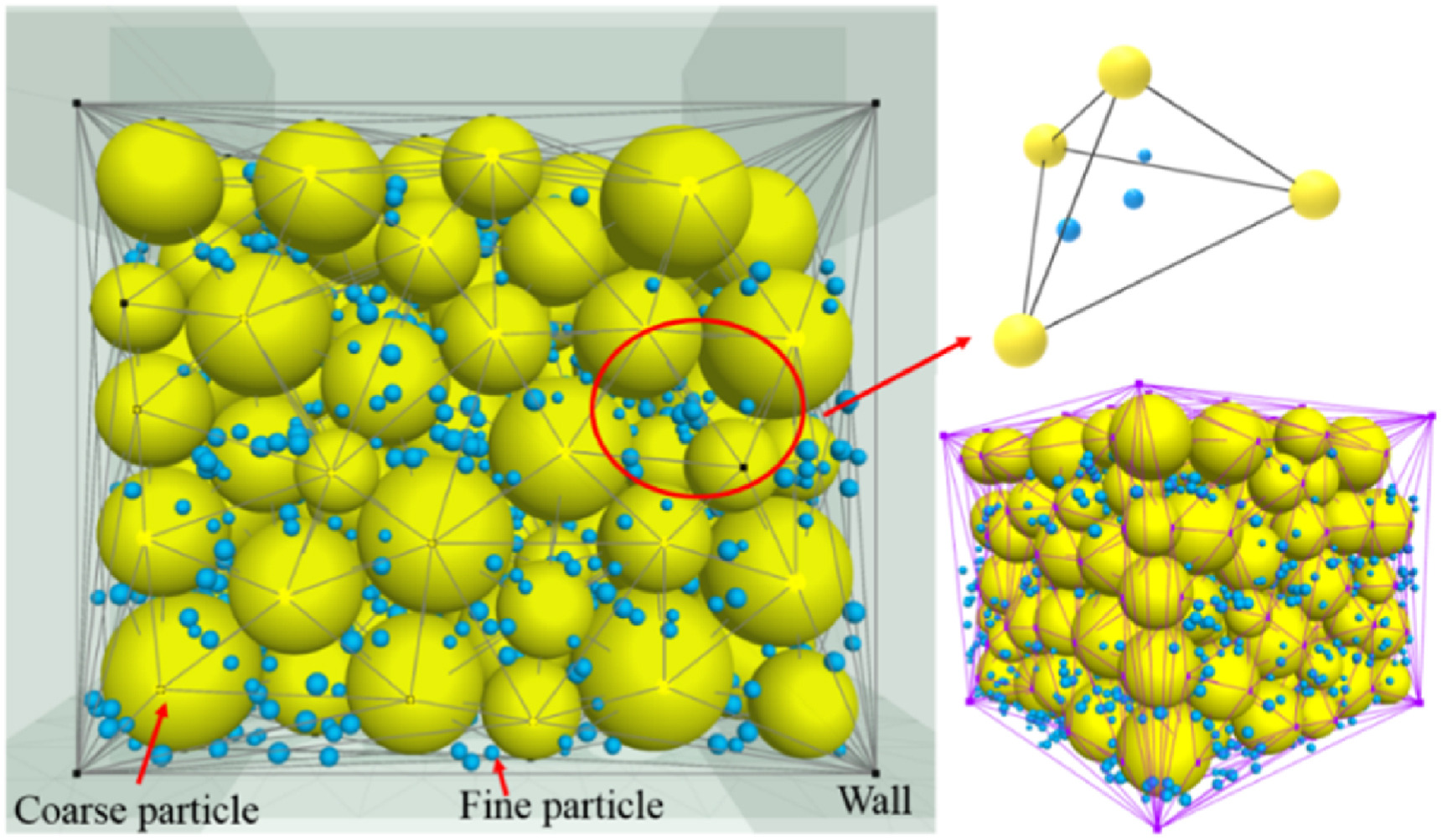-
Editorial for Advances and applications of deep learning and soft computing in geotechnical underground engineering
Wengang Zhang, Kok-Kwang Phoon
2022, 14(3): 671-673. doi:10.1016/j.jrmge.2022.01.001
Abstract: We are privileged to be invited by the Honorary Editor-in-Chief, Professor Qihu Qian, Editor-in-Chief, Professor Xia-Ting Feng, and the editorial staff of the Journal of Rock Mechanics and Geotechnical Engineering (JRMGE), to serve as Guest Editors for this Special Issue (SI). The purpose of this SI is to review the latest development of machine learning (ML) techniques including the soft computing (SC) and deep learWe are privileged to be invited by the Honorary Editor-in-Chief, Professor Qihu Qian, Editor-in-Chief, Professor Xia-Ting Feng, and the editorial staff of the Journal of Rock Mechanics and Geotechnical Engineering (JRMGE), to serve as Guest Editors for this Special Issue (SI).
The purpose of this SI is to review the latest development of machine learning (ML) techniques including the soft computing (SC) and deep learning (DL) methods as well as their key applications in geotechnical underground engineering problems. The publication of this SI is timely given the significant interest and progress in data-centric geotechnics (Phoon and Ching, 2021). The International Society for Soil Mechanics and Geotechnical Engineering (ISSMGE) TC309/TC304/TC222 3rd Machine Learning in Geotechnics Dialogue (3MLIGD) was convened on 3 December 2021 to foster greater connectivity between researchers and practitioners to accelerate progress in this nascent field of data-centric geotechnics. The SI contains 22 invited papers covering different ML models, their performance, and the challenges faced in real world applications.
[...]Read more. -
Characterization of carbon dioxide leakage process along faults in the laboratory
Lifeng Xu, Qi Li, Yongsheng Tan, Xiaochun Li
2022, 14(3): 674-688. doi:10.1016/j.jrmge.2021.12.019
Abstract: It is important to understand the process of multiphase carbon dioxide (CO2) leakage in faults for the risk assessment of carbon capture and storage (CCS). To quantitatively characterize the CO2 leakage process in the fault, pressure sensors, fiber Bragg grating (FBG) temperature and strain sensors were simultaneously used to monitor CO2 leakage in the fault. Ten experiments were carried out, including five groups ofShow FiguresIt is important to understand the process of multiphase carbon dioxide (CO2) leakage in faults for the risk assessment of carbon capture and storage (CCS). To quantitatively characterize the CO2 leakage process in the fault, pressure sensors, fiber Bragg grating (FBG) temperature and strain sensors were simultaneously used to monitor CO2 leakage in the fault. Ten experiments were carried out, including five groups of gaseous CO2 leakage tests with initial pressures of 1–5 MPa and five groups of liquid CO2 leakage tests with initial pressures of 6–10 MPa. The results indicate that when liquid CO2 leaked with an initial pressure of 7–10 MPa, the pressure and temperature of CO2 dropped rapidly in the first few seconds and then remained unchanged. The behavior that CO2 continues to leak while maintaining temperature and pressure unchanged is defined as “temporary pseudo-sealing (TPS)” behavior, which continues for the first 1/3 of the leakage period. However, this TPS behavior did not occur in gaseous CO2 leakage. If only the pressure and temperature data were used to evaluate whether CO2 leakage occurred, we would misjudge the risk of leakage in CCS projects during the TPS period. The causes and conditions of TPS behavior were further studied experimentally. The results show that: (1) TPS behavior is caused by the phase transition energy generated when liquid CO2 leaks. (2) The condition for TPS behavior is a small leak aperture (0.2 mm). Only a small leakage rate can make the phase transition energy and pressure change from a dynamic equilibrium, and (3) The compression zone caused by the Bernoulli effect and fault “barrier” could reduce the CO2 leakage rate and further promote the occurrence of TPS behavior. This study provides technical and theoretical support for the quantitative characterization of the CO2 leakage process in faults of CCS projects.
[...]Read more. -
Swelling ability and behaviour of bentonite-based materials for deep repository engineered barrier systems: Influence of physical, chemical and thermal factors
Mohammed Alzamel, Mamadou Fall, Sada Haruna
2022, 14(3): 689-702. doi:10.1016/j.jrmge.2021.11.009
Abstract: Compacted bentonite–sand (B/S) mixtures have been used as a barrier material in engineered barrier systems (EBSs) of deep geological repositories (DGR) to store nuclear wastes. This study investigates the individual and combined effects of different chemical compositions of deep groundwaters (chemical factor) at potential repository sites in Canada (the Trenton and Guelph regions in Ontario), heat generated inShow FiguresCompacted bentonite–sand (B/S) mixtures have been used as a barrier material in engineered barrier systems (EBSs) of deep geological repositories (DGR) to store nuclear wastes. This study investigates the individual and combined effects of different chemical compositions of deep groundwaters (chemical factor) at potential repository sites in Canada (the Trenton and Guelph regions in Ontario), heat generated in DGRs (thermal factor), dry densities and mass ratios of bentonite and sand mixtures (physical factors) on the swelling behavior and ability of bentonite-based materials. In this study, swelling tests are conducted on B/S mixtures with different B/S mix ratios (20/80 to 70/30), compacted at different dry densities (ρd = 1.6–2 g/cm3), saturated with different types of water (distilled water and simulated deep groundwater of Trenton and Guelph) and exposed to different temperatures (20 °C–80 °C). Moreover, scanning electron microscopy (SEM) analyses, mercury intrusion porosimetry (MIP) tests and X-ray diffractometry (XRD) analyses are carried out to evaluate the morphological, microstructural and mineralogical characteristics of the B/S mixtures. The test results indicate that the swelling potential of the B/S mixtures is significantly affected by these physical and chemical factors as well as the combined effects of the chemical and thermal factors. A significant decrease in the swelling capacity is observed when the B/S materials are exposed to the aforementioned groundwaters. A large decrease in the swelling capacity is observed for higher bentonite content in the mixtures. Moreover, higher temperatures intensify the chemically-induced reduction of the swelling capacity of the B/S barrier materials. This decrease in the swelling capacity is caused by the chemical and/or microstructural changes of the materials. The results from this research will help engineers to design and build EBSs for DGRs with similar groundwater and thermal conditions.
[...]Read more. -
Use of machine learning algorithms to assess the state of rockburst hazard in underground coal mine openings
Łukasz Wojtecki, Sebastian Iwaszenko, Derek B. Apel, Mirosława Bukowska, Janusz Makówka
2022, 14(3): 703-713. doi:10.1016/j.jrmge.2021.10.011
Abstract: The risk of rockbursts is one of the main threats in hard coal mines. Compared to other underground mines, the number of factors contributing to the rockburst at underground coal mines is much greater. Factors such as the coal seam tendency to rockbursts, the thickness of the coal seam, and the stress level in the seam have to be considered, but also the entire coal seam–surrounding rock system has to be evaluaShow FiguresThe risk of rockbursts is one of the main threats in hard coal mines. Compared to other underground mines, the number of factors contributing to the rockburst at underground coal mines is much greater. Factors such as the coal seam tendency to rockbursts, the thickness of the coal seam, and the stress level in the seam have to be considered, but also the entire coal seam–surrounding rock system has to be evaluated when trying to predict the rockbursts. However, in hard coal mines, there are stroke or stress-stroke rockbursts in which the fracture of a thick layer of sandstone plays an essential role in predicting rockbursts. The occurrence of rockbursts in coal mines is complex, and their prediction is even more difficult than in other mines. In recent years, the interest in machine learning algorithms for solving complex nonlinear problems has increased, which also applies to geosciences. This study attempts to use machine learning algorithms, i.e. neural network, decision tree, random forest, gradient boosting, and extreme gradient boosting (XGB), to assess the rockburst hazard of an active hard coal mine in the Upper Silesian Coal Basin. The rock mass bursting tendency index WTG that describes the tendency of the seam–surrounding rock system to rockbursts and the anomaly of the vertical stress component were applied for this purpose. Especially, the decision tree and neural network models were proved to be effective in correctly distinguishing rockbursts from tremors, after which the excavation was not damaged. On average, these models correctly classified about 80% of the rockbursts in the testing datasets.
[...]Read more. -
Jackknife based generalized resampling reliability approach for rock slopes and tunnels stability analyses with limited data: Theory and applications
Akshay Kumar, Gaurav Tiwari
2022, 14(3): 714-730. doi:10.1016/j.jrmge.2021.11.003
Abstract: An efficient resampling reliability approach was developed to consider the effect of statistical uncertainties in input properties arising due to insufficient data when estimating the reliability of rock slopes and tunnels. This approach considers the effect of uncertainties in both distribution parameters (mean and standard deviation) and types of input properties. Further, the approach was generalized to make it caShow FiguresAn efficient resampling reliability approach was developed to consider the effect of statistical uncertainties in input properties arising due to insufficient data when estimating the reliability of rock slopes and tunnels. This approach considers the effect of uncertainties in both distribution parameters (mean and standard deviation) and types of input properties. Further, the approach was generalized to make it capable of analyzing complex problems with explicit/implicit performance functions (PFs), single/multiple PFs, and correlated/non-correlated input properties. It couples resampling statistical tool, i.e. jackknife, with advanced reliability tools like Latin hypercube sampling (LHS), Sobol's global sensitivity, moving least square-response surface method (MLS-RSM), and Nataf's transformation. The developed approach was demonstrated for four cases encompassing different types. Results were compared with a recently developed bootstrap-based resampling reliability approach. The results show that the approach is accurate and significantly efficient compared with the bootstrap-based approach. The proposed approach reflects the effect of statistical uncertainties of input properties by estimating distributions/confidence intervals of reliability index/probability of failure(s) instead of their fixed-point estimates. Further, sufficiently accurate results were obtained by considering uncertainties in distribution parameters only and ignoring those in distribution types.
[...]Read more. -
Comparative analysis of deformation and failure mechanisms of underground powerhouses on the left and right banks of Baihetan hydropower station
Anchi Shi, Congjiang Li, Wangbing Hong, Gongda Lu, Jiawen Zhou, Haibo Li
2022, 14(3): 731-745. doi:10.1016/j.jrmge.2021.09.012
Abstract: The stability of the surrounding rocks of large underground powerhouses is always emphasized during the construction process, especially in large-scale underground projects under construction, such as the Baihetan hydropower station in China. According to field investigations, numerical simulations and monitoring data analysis, we present a comparative analysis of the deformation and failure characteristics of the suShow FiguresThe stability of the surrounding rocks of large underground powerhouses is always emphasized during the construction process, especially in large-scale underground projects under construction, such as the Baihetan hydropower station in China. According to field investigations, numerical simulations and monitoring data analysis, we present a comparative analysis of the deformation and failure characteristics of the surrounding rocks of underground powerhouses on the left and right banks of the Baihetan hydropower station. The failure characteristics and deformation magnitude of the underground powerhouses on the left and right banks are quite different. Under the disadvantageous condition where the maximum principal stress intersects the axis of the powerhouse at a large angle, the left bank underground powerhouse shows prominent stress-controlled failure characteristics such as spalling, slack collapse and concrete cracking. Although the maximum principal stress is in the favorable condition which intersects the right bank powerhouse at a small angle, the relatively high intermediate principal stress with an angle subvertical to the right bank powerhouse plays an essential role in its deformation and failure, indicating that the influence of high intermediate principal stress cannot be ignored. In addition, structural plane-controlled failure and large deformation are also more evident on the right bank due to the extensive distribution of weak structural planes and complex surrounding rock properties.
[...]Read more. -
Frictional behavior of planar and rough granite fractures subjected to normal load oscillations of different amplitudes
Wengang Dang, Kang Tao, Xinfan Chen
2022, 14(3): 746-756. doi:10.1016/j.jrmge.2021.09.011
Abstract: The dynamic frictional behaviors of natural discontinuities (joints, fractures, faults) play an important role in geohazards assessment; however, the mechanisms of the dynamic fault weakening/strengthening are still unclear. In this paper, a dynamic shear box was used to perform direct shear tests on saw-cut (planar) and natural (rough) granite fractures, with different normal load oscillation amplitudes. Based on thShow FiguresThe dynamic frictional behaviors of natural discontinuities (joints, fractures, faults) play an important role in geohazards assessment; however, the mechanisms of the dynamic fault weakening/strengthening are still unclear. In this paper, a dynamic shear box was used to perform direct shear tests on saw-cut (planar) and natural (rough) granite fractures, with different normal load oscillation amplitudes. Based on the recorded shear forces and normal displacements, the shear forces, apparent friction coefficients and normal displacements are found to change periodically with oscillated normal loads and are characterized by a series of time shifts. The observed changing patterns are similar for the rough and planar fractures. Compared with the test data under constant normal load (CNL), small/large normal load oscillation amplitude enhances/reduces the peak shear strength, with a critical point. The magnitude of critical normal load oscillation for the rough fractures is smaller than the planer fractures. The results imply that dynamic fault weakening/strengthening can be achieved by both normal load oscillation amplitudes and slip surface topography. The rough fractures with larger normal oscillation amplitude can easily cause frictional weakening under stress disturbance.
[...]Read more. -
Fracture of two three-dimensional parallel internal cracks in brittle solid under ultrasonic fracturing
Haijun Wang, Hanzhang Li, Lei Tang, Xuhua Ren, Qingxiang Meng, Chun Zhu
2022, 14(3): 757-769. doi:10.1016/j.jrmge.2021.11.002
Abstract: Similar to hydraulic fracturing (HF), the coalescence and fracture of cracks are induced within a rock under the action of an ultrasonic field, known as ultrasonic fracturing (UF). Investigating UF is important in both hard rock drilling and oil and gas recovery. A three-dimensional internal laser-engraved crack (3D-ILC) method was introduced to prefabricate two parallel internal cracks within the samples without anyShow FiguresSimilar to hydraulic fracturing (HF), the coalescence and fracture of cracks are induced within a rock under the action of an ultrasonic field, known as ultrasonic fracturing (UF). Investigating UF is important in both hard rock drilling and oil and gas recovery. A three-dimensional internal laser-engraved crack (3D-ILC) method was introduced to prefabricate two parallel internal cracks within the samples without any damage to the surface. The samples were subjected to UF. The mechanism of UF was elucidated by analyzing the characteristics of fracture surfaces. The crack propagation path under different ultrasonic parameters was obtained by numerical simulation based on the Paris fatigue model and compared to the experimental results of UF. The results show that the 3D-ILC method is a powerful tool for UF research. Under the action of an ultrasonic field, the fracture surface shows the characteristics of beach marks and contains powder locally, indicating that the UF mechanism includes high-cycle fatigue fracture, shear and friction, and temperature load. The two internal cracks become close under UF. The numerical result obtained by the Paris fatigue model also shows the attraction of the two cracks, consistent with the test results. The 3D-ILC method provides a new tool for the experimental study of UF. Compared to the conventional numerical methods based on the analysis of stress–strain and plastic zone, numerical simulation can be a good alternative method to obtain the crack path under UF.
[...]Read more. -
Improved uranium leaching efficiency from low-permeability sandstone using low-frequency vibration in the CO2+O2 leaching process
Yong Zhao, Yong Gao, Caiwu Luo, Jun Liu
2022, 14(3): 770-780. doi:10.1016/j.jrmge.2021.10.013
Abstract: Extraction of uranium from low-permeability sandstone is a long-standing challenge in mining. The improvement of sandstone permeability has therefore become a key research focus to improve the uranium leaching effect. To address the low-permeability problem and corresponding leaching limits, leaching experiments are performed using newly developed equipment that could apply low-frequency vibration to the sandstone saShow FiguresExtraction of uranium from low-permeability sandstone is a long-standing challenge in mining. The improvement of sandstone permeability has therefore become a key research focus to improve the uranium leaching effect. To address the low-permeability problem and corresponding leaching limits, leaching experiments are performed using newly developed equipment that could apply low-frequency vibration to the sandstone samples. The test results indicate that low-frequency vibration significantly improves the uranium leaching performance and permeability of the sandstone samples. The leaching effect of low-frequency vibration treatment is approximately nine times more effective than ultrasonic vibration treatment, whereas the concentration of uranium ions generated without vibration treatment is not detectable. Mathematical model that considers the combined action of physico-mechanical vibration and chemical erosion is established to describe the effect of low-frequency vibration on the permeability. The calculated results are in good agreement with the tested permeability values. This study thus offers a new method to effectively leach more uranium from low-permeability sandstone using CO2+O2 and provides an insight into the impact of low-frequency vibration on the uranium leaching process.
[...]Read more. -
Experimental studies on the pore structure and mechanical properties of anhydrite rock under freeze-thaw cycles
Chao Hou, Xiaoguang Jin, Jie He, Hanlin Li
2022, 14(3): 781-797. doi:10.1016/j.jrmge.2021.10.005
Abstract: To study the deterioration mechanisms of anhydrite rock under the freeze-thaw weathering process, the physico-mechanical characteristics and microstructure evolutions of anhydrite samples were determined by a series of laboratory tests. Then, a descriptive-behavioral model was used to measure the integrity loss in anhydrite samples caused by cyclic freeze-thaw. Finally, the freeze-thaw damage mechanisms of anhydriteShow FiguresTo study the deterioration mechanisms of anhydrite rock under the freeze-thaw weathering process, the physico-mechanical characteristics and microstructure evolutions of anhydrite samples were determined by a series of laboratory tests. Then, a descriptive-behavioral model was used to measure the integrity loss in anhydrite samples caused by cyclic freeze-thaw. Finally, the freeze-thaw damage mechanisms of anhydrite rock were revealed from the macro and micro aspects. The results show that the pore size of the anhydrite rock is mainly concentrated in the range of 0.001–10 μm. As the number of freeze-thaw cycles increases, there is a growth in the proportion of macropores and mesopores. However, the proportion of micropores shows a declining trend. The relations of the uniaxial compressive strength, triaxial compressive strength, cohesion, and elastic modulus versus freeze-thaw cycles can be fitted by a decreasing exponential function, while the internal friction angle is basically unchanged with freeze-thaw cycles. With the increase of confining pressure, the disintegration rates of the compressive strength and the elastic modulus decrease, and the corresponding half-life values increase, which reveals that the increase of confining pressures could inhibit freeze-thaw damage to rocks. Moreover, it has been proven that the water chemical softening mechanism plays an essential role in the freeze-thaw damage to anhydrite rock. Furtherly, it is concluded that the freeze-thaw weathering process significantly influences the macroscopic and microscopic damages of anhydrite rock.
[...]Read more. -
A real-time prediction method for tunnel boring machine cutter-head torque using bidirectional long short-term memory networks optimized by multi-algorithm
Xing Huang, Quantai Zhang, Quansheng Liu, Xuewei Liu, Bin Liu, Junjie Wang, Xin Yin
2022, 14(3): 798-812. doi:10.1016/j.jrmge.2021.11.008
Abstract: Based on data from the Jilin Water Diversion Tunnels from the Songhua River (China), an improved and real-time prediction method optimized by multi-algorithm for tunnel boring machine (TBM) cutter-head torque is presented. Firstly, a function excluding invalid and abnormal data is established to distinguish TBM operating state, and a feature selection method based on the SelectKBest algorithm is proposed. AccordinglyShow FiguresBased on data from the Jilin Water Diversion Tunnels from the Songhua River (China), an improved and real-time prediction method optimized by multi-algorithm for tunnel boring machine (TBM) cutter-head torque is presented. Firstly, a function excluding invalid and abnormal data is established to distinguish TBM operating state, and a feature selection method based on the SelectKBest algorithm is proposed. Accordingly, ten features that are most closely related to the cutter-head torque are selected as input variables, which, in descending order of influence, include the sum of motor torque, cutter-head power, sum of motor power, sum of motor current, advance rate, cutter-head pressure, total thrust force, penetration rate, cutter-head rotational velocity, and field penetration index. Secondly, a real-time cutter-head torque prediction model's structure is developed, based on the bidirectional long short-term memory (BLSTM) network integrating the dropout algorithm to prevent overfitting. Then, an algorithm to optimize hyperparameters of model based on Bayesian and cross-validation is proposed. Early stopping and checkpoint algorithms are integrated to optimize the training process. Finally, a BLSTM-based real-time cutter-head torque prediction model is developed, which fully utilizes the previous time-series tunneling information. The mean absolute percentage error (MAPE) of the model in the verification section is 7.3%, implying that the presented model is suitable for real-time cutter-head torque prediction. Furthermore, an incremental learning method based on the above base model is introduced to improve the adaptability of the model during the TBM tunneling. Comparison of the prediction performance between the base and incremental learning models in the same tunneling section shows that: (1) the MAPE of the predicted results of the BLSTM-based real-time cutter-head torque prediction model remains below 10%, and both the coefficient of determination (R2) and correlation coefficient (r) between measured and predicted values exceed 0.95; and (2) the incremental learning method is suitable for real-time cutter-head torque prediction and can effectively improve the prediction accuracy and generalization capacity of the model during the excavation process.
[...]Read more. -
Analytical modeling of complex contact behavior between rock mass and lining structure
Dingli Zhang, Tong Xu, Huangcheng Fang, Qian Fang, Liqiang Cao, Ming Wen
2022, 14(3): 813-824. doi:10.1016/j.jrmge.2021.10.007
Abstract: Based on the nondestructive test data of operating railway tunnels in China, this paper summarizes the basic characteristics of the complex contact behavior between the rock mass and lining structure. The contact modes are classified into dense contact, local non-contact, and loose contact. Subsequently, the corresponding mechanical model for each contact mode is developed according to its mechanical characteristicsShow FiguresBased on the nondestructive test data of operating railway tunnels in China, this paper summarizes the basic characteristics of the complex contact behavior between the rock mass and lining structure. The contact modes are classified into dense contact, local non-contact, and loose contact. Subsequently, the corresponding mechanical model for each contact mode is developed according to its mechanical characteristics using the complex variable method. In the proposed mechanical model, a special algorithm is introduced to detect whether the local non-contact zone is re-contacted. Besides, a novel conformal mapping method is also proposed to accurately calculate the mechanical response of the concrete lining. Finally, the accuracy of the proposed method is verified by comparing it with the finite element method (FEM). Several parameter investigations are conducted to analyze the effects of different contact modes on the rock–lining interaction. The results show that: (i) the height of the local non-contact area does not have a significant effect on the contact stress distribution if no re-contact occurs; (ii) backfill grouting can reduce the local stress concentration caused by poor contact modes; and (iii) reducing the friction coefficient of the interface can lead to a more uniform distribution of internal forces in the concrete lining.
[...]Read more. -
An analytical solution of equivalent elastic modulus considering confining stress and its variables sensitivity analysis for fractured rock masses
Donghui Chen, Huie Chen, Wen Zhang, Junqing Lou, Bo Shan
2022, 14(3): 825-836. doi:10.1016/j.jrmge.2021.08.007
Abstract: The equivalent elastic modulus is a parameter for controlling the deformation behavior of fractured rock masses in the equivalent continuum approach. The confining stress, whose effect on the equivalent elastic modulus is of great importance, is the fundamental stress environment of natural rock masses. This paper employs an analytical approach to obtain the equivalent elastic modulus of fractured rock masses containShow FiguresThe equivalent elastic modulus is a parameter for controlling the deformation behavior of fractured rock masses in the equivalent continuum approach. The confining stress, whose effect on the equivalent elastic modulus is of great importance, is the fundamental stress environment of natural rock masses. This paper employs an analytical approach to obtain the equivalent elastic modulus of fractured rock masses containing random discrete fractures (RDFs) or regular fracture sets (RFSs) while considering the confining stress. The proposed analytical solution considers not only the elastic properties of the intact rocks and fractures, but also the geometrical structure of the fractures and the confining stress. The performance of the analytical solution is verified by comparing it with the results of numerical tests obtained using the three-dimensional distinct element code (3DEC), leading to a reasonably good agreement. The analytical solution quantitatively demonstrates that the equivalent elastic modulus increases substantially with an increase in confining stress, i.e. it is characterized by stress-dependency. Further, a sensitivity analysis of the variables in the analytical solution is conducted using a global sensitivity analysis approach, i.e. the extended Fourier amplitude sensitivity test (EFAST). The variations in the sensitivity indices for different ranges and distribution types of the variables are investigated. The results provide an in-depth understanding of the influence of the variables on the equivalent elastic modulus from different perspectives.
[...]Read more. -
Consolidation of partially saturated ground improved by impervious column inclusion: Governing equations and semi-analytical solutions
Lei Wang, Annan Zhou, Yongfu Xu, Xiaohe Xia
2022, 14(3): 837-850. doi:10.1016/j.jrmge.2021.09.017
Abstract: This study focuses on the consolidation behavior and mathematical interpretation of partially-saturated ground improved by impervious column inclusion. The constitutive relations for soil skeleton, pore air and pore water for partially saturated soils are proposed in the context of partially-saturated ground improved by impervious column inclusion. Settlement equation and dissipation equations of excess pore air/wateShow FiguresThis study focuses on the consolidation behavior and mathematical interpretation of partially-saturated ground improved by impervious column inclusion. The constitutive relations for soil skeleton, pore air and pore water for partially saturated soils are proposed in the context of partially-saturated ground improved by impervious column inclusion. Settlement equation and dissipation equations of excess pore air/water pressures for a partially saturated improved ground are then derived. The semi-analytical solutions for ground settlement and pore pressure dissipation are then obtained through the Laplace transform and validated by the existing solutions for two special cases in the literature and the numerical results obtained from the finite difference method. A series of parametric studies is finally conducted to investigate the influence of some key factors on consolidation of partially saturated ground improved by impervious column inclusion. Based on the parametric study, it can be found that a higher value of the area replacement ratio or modulus of the pile results in a longer dissipation time of excess pore air pressure (PAP), a shorter dissipation time of excess pore water pressure (PWP), and a lower normalized settlement.
[...]Read more. -
Effects of dry-wet cycles on three-dimensional pore structure and permeability characteristics of granite residual soil using X-ray micro computed tomography
Ran An, Lingwei Kong, Xianwei Zhang, Chengsheng Li
2022, 14(3): 851-860. doi:10.1016/j.jrmge.2021.10.004
Abstract: Due to seasonal climate alterations, the microstructure and permeability of granite residual soil are easily affected by multiple dry-wet cycles. The X-ray micro computed tomography (micro-CT) acted as a non-destructive tool for characterizing the microstructure of soil samples exposed to a range of damage levels induced by dry-wet cycles. Subsequently, the variations of pore distribution and permeability due to dry-Show FiguresDue to seasonal climate alterations, the microstructure and permeability of granite residual soil are easily affected by multiple dry-wet cycles. The X-ray micro computed tomography (micro-CT) acted as a non-destructive tool for characterizing the microstructure of soil samples exposed to a range of damage levels induced by dry-wet cycles. Subsequently, the variations of pore distribution and permeability due to dry-wet cycling effects were revealed based on three-dimensional (3D) pore distribution analysis and seepage simulations. According to the results, granite residual soils could be separated into four different components, namely, pores, clay, quartz, and hematite, from micro-CT images. The reconstructed 3D pore models dynamically demonstrated the expanding and connecting patterns of pore structures during dry-wet cycles. The values of porosity and connectivity are positively correlated with the number of dry-wet cycles, which were expressed by exponential and linear functions, respectively. The pore volume probability distribution curves of granite residual soil coincide with the χ2 distribution curve, which verifies the effectiveness of the assumption of χ2 distribution probability. The pore volume distribution curves suggest that the pores in soils were divided into four types based on their volumes, i.e. micropores, mesopores, macropores, and cracks. From a quantitative and visual perspective, considerable small pores are gradually transformed into cracks with a large volume and a high connectivity. Under the action of dry-wet cycles, the number of seepage flow streamlines which contribute to water permeation in seepage simulation increases distinctly, as well as the permeability and hydraulic conductivity. The calculated hydraulic conductivity is comparable with measured ones with an acceptable error margin in general, verifying the accuracy of seepage simulations based on micro-CT results.
[...]Read more. -
Model-scale tests to examine water pressures acting on potentially buoyant underground structures in clay strata
Zhisheng Ren, Qixian Lu, Kaiwen Liu, Pengpeng Ni, Guoxiong Mei
2022, 14(3): 861-872. doi:10.1016/j.jrmge.2021.09.014
Abstract: Throughout the service life, underground structures are subjected to transient and sustained hydrostatic pressures. The reservoir impoundment results in an increase in water level, as well as hydraulic gradient, which can endanger the uplift performance of infrastructure. In uplift design, a reduction factor is often suggested for buoyant force acting on underground structures in clays due to the time lag effect. HowShow FiguresThroughout the service life, underground structures are subjected to transient and sustained hydrostatic pressures. The reservoir impoundment results in an increase in water level, as well as hydraulic gradient, which can endanger the uplift performance of infrastructure. In uplift design, a reduction factor is often suggested for buoyant force acting on underground structures in clays due to the time lag effect. However, the mechanism of pore pressure generation in clays is not fully understood. This investigation presents a novel U-shaped test chamber to assess the pore pressure generation with time in the horizontal branch subjected to an increase in reservoir level in the left vertical branch. A mathematical model is developed to explain the time lag effect of pore pressure generation. The test program also involves the evaluation of uplift pressure acting on foundation model in the right vertical branch due to adjacent reservoir impoundment. It is found that the time lag effect of pore pressure generation in clays can be observed irrespective of hydraulic gradient, but a higher hydraulic gradient can lead to a faster response in pore pressure sensors. A reduction factor of 0.84–0.87 should be considered to reduce the conservatism of uplift design.
[...]Read more. -
Coupled effects of particle overall regularity and sliding friction on the shear behavior of uniformly graded dense sands
Jiayan Nie, Shiwei Zhao, Yifei Cui, Yu Wang
2022, 14(3): 873-885. doi:10.1016/j.jrmge.2021.10.014
Abstract: Particle morphology has been regarded as an important factor affecting shear behaviors of sands, and covers three important aspects, i.e. global form (overall shape), local roundness (large-scale smoothness), and surface texture (roughness) in terms of different observation scales. Shape features of different aspects can be independent of each other but might have coupled effects on the bulk behavior of sands, whichShow FiguresParticle morphology has been regarded as an important factor affecting shear behaviors of sands, and covers three important aspects, i.e. global form (overall shape), local roundness (large-scale smoothness), and surface texture (roughness) in terms of different observation scales. Shape features of different aspects can be independent of each other but might have coupled effects on the bulk behavior of sands, which has been not explored thoroughly yet. This paper presents a systematic investigation of the coupled effects of the particle overall regularity (OR) and sliding friction on the shear behavior of dense sands using three-dimensional (3D) discrete element method (DEM). The representative volume elements consisting of ideal spheres and irregular clumps of different mass proportions are prepared to conduct drained triaxial compression simulations. A well-defined shape descriptor named OR is adopted to quantify particle shape differences of numerical samples at both form and roundness aspects, and the particle sliding friction coefficient varies from 0.001 to 1 to consider the surface roughness effect equivalently in DEM. The stress-strain relationships as well as peak and critical friction angles of these assemblies are examined systematically. Moreover, contact network and anisotropic fabric characteristics within different granular assemblies are analyzed to explore the microscopic origins of the multi-scale shape-dependent shear strength. This study helps to improve the current understanding with respect to the influence of the particle shape on the shear behavior of sands from different shape aspects.
[...]Read more. -
Spatially variable soils affecting geotechnical strip foundation design
Joanna Pieczyńska-Kozłowska, Giovanna Vessia
2022, 14(3): 886-895. doi:10.1016/j.jrmge.2021.10.010
Abstract: Natural soil variability is a well-known issue in geotechnical design, although not frequently managed in practice. When subsoil must be characterized in terms of mechanical properties for infrastructure design, random finite element method (RFEM) can be effectively adopted for shallow foundation design to gain a twofold purpose: (1) understanding how much the bearing capacity is affected by the spatial variability sShow FiguresNatural soil variability is a well-known issue in geotechnical design, although not frequently managed in practice. When subsoil must be characterized in terms of mechanical properties for infrastructure design, random finite element method (RFEM) can be effectively adopted for shallow foundation design to gain a twofold purpose: (1) understanding how much the bearing capacity is affected by the spatial variability structure of soils, and (2) optimisation of the foundation dimension (i.e. width B). The present study focuses on calculating the bearing capacity of shallow foundations by RFEM in terms of undrained and drained conditions. The spatial variability structure of soil is characterized by the autocorrelation function and the scale of fluctuation (δ). The latter has been derived by geostatistical tools such as the ordinary Kriging (OK) approach based on 182 cone penetration tests (CPTs) performed in the alluvial plain in Bologna Province, Italy. Results show that the increase of the B/δ ratio not only reduces the bearing capacity uncertainty but also increases its mean value under drained conditions. Conversely, under the undrained condition, the autocorrelation function strongly affects the mean values of bearing capacity. Therefore, the authors advise caution when selecting the autocorrelation function model for describing the soil spatial variability structure and point out that undrained conditions are more affected by soil variability compared to the drained ones.
[...]Read more. -
Rockhead profile simulation using an improved generation method of conditional random field
Liang Han, Lin Wang, Wengang Zhang, Boming Geng, Shang Li
2022, 14(3): 896-908. doi:10.1016/j.jrmge.2021.09.007
Abstract: Rockhead profile is an important part of geological profiles and can have significant impacts on some geotechnical engineering practice, and thus, it is necessary to establish a useful method to reverse the rockhead profile using site investigation results. As a general method to reflect the spatial distribution of geo-material properties based on field measurements, the conditional random field (CRF) was improved inShow FiguresRockhead profile is an important part of geological profiles and can have significant impacts on some geotechnical engineering practice, and thus, it is necessary to establish a useful method to reverse the rockhead profile using site investigation results. As a general method to reflect the spatial distribution of geo-material properties based on field measurements, the conditional random field (CRF) was improved in this paper to simulate rockhead profiles. Besides, in geotechnical engineering practice, measurements are generally limited due to the limitations of budget and time so that the estimation of the mean value can have uncertainty to some extent. As the Bayesian theory can effectively combine the measurements and prior information to deal with uncertainty, CRF was implemented with the aid of the Bayesian framework in this study. More importantly, this simulation procedure is achieved as an analytical solution to avoid the time-consuming sampling work. The results show that the proposed method can provide a reasonable estimation about the rockhead depth at various locations against measurement data and as a result, the subjectivity in determining prior mean can be minimized. Finally, both the measurement data and selection of hyper-parameters in the proposed method can affect the simulated rockhead profiles, while the influence of the latter is less significant than that of the former.
[...]Read more. -
Use of recycled gypsum in the cement-based stabilization of very soft clays and its micro-mechanism
Jun Wu, Li Liu, Yongfeng Deng, Guoping Zhang, Annan Zhou, Henglin Xiao
2022, 14(3): 909-921. doi:10.1016/j.jrmge.2021.10.002
Abstract: This paper presents an experimental study and micro-mechanism discussion on gypsum role in the mechanical improvements of cement-based stabilized clay (CBSC). A soft marine clay at two initial water contents (i.e. 50% and 70%) was treated by reconstituted cementitious binders with varying gypsum to clinker (G/C) ratios and added metakaolin to facilitate the formation of ettringite, followed by the measurements of finShow FiguresThis paper presents an experimental study and micro-mechanism discussion on gypsum role in the mechanical improvements of cement-based stabilized clay (CBSC). A soft marine clay at two initial water contents (i.e. 50% and 70%) was treated by reconstituted cementitious binders with varying gypsum to clinker (G/C) ratios and added metakaolin to facilitate the formation of ettringite, followed by the measurements of final water contents, dry densities and strengths in accordance with ASTM standards as well as microstructure by mercury intrusion porosimetry (MIP) and scanning electron microscopy (SEM). Results reveal that the gypsum fraction has a significant influence on the index and mechanical properties of the CBSC, and there exists a threshold of the G/C ratio, which is 10% and 15% for clays with 50% and 70% initial water contents, respectively. Beyond which adding excessive gypsum cannot improve the strength further, eliminating the beneficial role. At these thresholds of the G/C ratio, the unconfined compressive strength (UCS) values for clays with 50% and 70% initial water contents are 1.74 MPa and 1.53 MPa at 60 d of curing, respectively. Microstructure characterization shows that, besides the common cementation-induced strengthening, newly formed ettringite also acts as significant pore infills, and the associated remarkable volumetric expansion is responsible, and may be the primary factor, for the beneficial strength gain due to the added gypsum. Moreover, pore-filling ettringite also leads to the conversion of relatively large inter-aggregate to smaller intra-aggregate pores, thereby causing a more homogeneous matrix or solid skeleton with higher strength. Overall, added gypsum plays a vital beneficial role in the strength development of the CBSC, especially for very soft clays.
[...]Read more. -
An undrained expansion solution of cylindrical cavity in SANICLAY for K0-consolidated clays
Haohua Chen, Pin-Qiang Mo
2022, 14(3): 922-935. doi:10.1016/j.jrmge.2021.10.016
Abstract: This paper proposes a rigorous undrained solution for cylindrical cavity expansion problems in K0-consolidated clays, adopting a simple non-associated and anisotropic model, SANICLAY. The cavity expansion theory is well extended to consider non-associativity, K0-consolidation and stress-induced anisotropy with combined rotational and distortional hardening of yield surface and plastic potential in the multiaxial streShow FiguresThis paper proposes a rigorous undrained solution for cylindrical cavity expansion problems in K0-consolidated clays, adopting a simple non-associated and anisotropic model, SANICLAY. The cavity expansion theory is well extended to consider non-associativity, K0-consolidation and stress-induced anisotropy with combined rotational and distortional hardening of yield surface and plastic potential in the multiaxial stress space. The developed solution can be recovered for validation against the modified Cam-clay (MCC) solution by simply setting model constants, avoiding non-associativity and anisotropy. The source code is provided to facilitate the use for extensions. After investigating the effects of overconsolidation ratio on the cavity pressure curves, stress distributions, evolutions of anisotropic parameters and stress paths, the variations with three-dimensional (3D) evolutions of yield surface and plastic potential during undrained cavity expansion are shown for various K0-consolidated clays. A parametric study on the model constants is presented to depict the influences on the stress distributions and paths, critical state surfaces and Lode's angles at failure. The proposed solution also provides a general framework for formulating equations for undrained expansion of cylindrical cavities under an initial cross anisotropic condition using sophisticated anisotropic soil models. It serves as a precise benchmark for extensions of analytical solutions, numerical simulations of cavity expansion, and back-calculations of geotechnical problems.
[...]Read more. -
Optimization of inter-helix spacing for helical piles in sand
Kang Shao, Qian Su, Junwei Liu, Kaiwen Liu, Zhipeng Xiong, Tengfei Wang
2022, 14(3): 936-952. doi:10.1016/j.jrmge.2021.11.007
Abstract: The optimization of the inter-helix spacing is a key issue of the axial bearing capacity of helical piles. In this paper, based on the cavity expansion, an analytical approach considering the small-strain stiffness, strength, compressibility and stress level of sand around the helical pile was proposed to analyze the influence zone of the helices to determine the optimal inter-helix spacing in sand. The calculation rShow FiguresThe optimization of the inter-helix spacing is a key issue of the axial bearing capacity of helical piles. In this paper, based on the cavity expansion, an analytical approach considering the small-strain stiffness, strength, compressibility and stress level of sand around the helical pile was proposed to analyze the influence zone of the helices to determine the optimal inter-helix spacing in sand. The calculation results of the proposed method were verified using the centrifuge test data and finite element analysis for helical pile in Congleton HST95 sand. They were also compared with those using the Meyerhof pile foundation theory. The results show that the optimal inter-helix spacing based on Meyerhof pile foundation theory differs significantly from the measurement. The range of the influence zone for the helices in sand calculated by the cavity expansion theory matches with the data from literature. The calculation results with the proposed method are consistent with the range of the optimal spacing ratio inferred in the centrifuge tests. The results based on the two-dimensional (2D) finite element model (FEM) are also basically consistent with the calculated analytical solution.
[...]Read more. -
Structural, volumetric and water retention behaviors of a compacted clay upon saline intrusion and freeze-thaw cycles
Jianguo Lin, Weilie Zou, Zhong Han, Ziwei Zhang, Xiequn Wang
2022, 14(3): 953-966. doi:10.1016/j.jrmge.2021.12.012
Abstract: This study investigates the evolution of the structural, volumetric and water retention behaviors of a compacted clay during soaking and desiccation considering the influences of freeze-thaw (FT) cycles and saline intrusion. Compacted specimens were subjected to different FT cycles and then submerged in NaCl solution with different concentrations to facilitate the saline intrusion and measure the swelling behaviors.Show FiguresThis study investigates the evolution of the structural, volumetric and water retention behaviors of a compacted clay during soaking and desiccation considering the influences of freeze-thaw (FT) cycles and saline intrusion. Compacted specimens were subjected to different FT cycles and then submerged in NaCl solution with different concentrations to facilitate the saline intrusion and measure the swelling behaviors. Shrinkage curve and filter paper tests were thereafter performed to reveal the clay's volumetric and water-retention characteristics during desiccation. Mercury intrusion porosimetry and field emission scanning electron microscopy tests were conducted to observe the evolution of the clay's microstructure. Experimental results show that the clay's micropores decrease and macropores increase after FT cycles, which is associated with the migration of water, growth of ice crystals, and development of FT-induced cracks during FT cycles. Similar observations were obtained from specimens after the saline intrusion, which is attributed to the osmotic and osmotically-induced consolidation. FT-induced cracks significantly reduce the clay's swelling and shrinkage potentials. FT cycles result in the shrinkage of micropores which leads to a reduction in the water retention capacity in the low suction range (capillary regime). The salinization suppresses the swelling of the clay and prolongs its primary and secondary swelling stages. The shrinkage potential initially increases and then decreases with increasing saline concentration. Salinization has significant influences on the osmotic suction and thus alters the clay's water-retention curves in terms of total suction. It demonstrates little impact on the clay's water-retention curves in terms of matric suction.
[...]Read more. -
Geotechnical particle finite element method for modeling of soil-structure interaction under large deformation conditions
Josep Maria Carbonell, Lluís Monforte, Matteo O. Ciantia, Marcos Arroyo, Antonio Gens
2022, 14(3): 967-983. doi:10.1016/j.jrmge.2021.12.006
Abstract: The possibilities of the particle finite element method (PFEM) for modeling geotechnical problems are increasingly evident. PFEM is a numerical approach to solve large displacement and large strain continuum problems that are beyond the capabilities of classical finite element method (FEM). In PFEM, the computational domain is reconfigured for optimal solution by frequent remeshing and boundary updating. PFEM inheritShow FiguresThe possibilities of the particle finite element method (PFEM) for modeling geotechnical problems are increasingly evident. PFEM is a numerical approach to solve large displacement and large strain continuum problems that are beyond the capabilities of classical finite element method (FEM). In PFEM, the computational domain is reconfigured for optimal solution by frequent remeshing and boundary updating. PFEM inherits many concepts, such as a Lagrangian description of continuum, from classic geomechanical FEM. This familiarity with more popular numerical methods facilitates learning and application. This work focuses on G-PFEM, a code specifically developed for the use of PFEM in geotechnical problems. The article has two purposes. The first is to give the reader an overview of the capabilities and main features of the current version of the G-PFEM and the second is to illustrate some of the newer developments of the code. G-PFEM can solve coupled hydro-mechanical static and dynamic problems involving the interaction of solid and/or deformable bodies. Realistic constitutive models for geomaterials are available, including features, such as structure and destructuration, which result in brittle response. The solutions are robust, solidly underpinned by numerical technology including mixed-field formulations, robust and mesh-independent integration of elastoplastic constitutive models and a rigorous and flexible treatment of contact interactions. The novel features presented in this work include the contact domain technique, a natural way to capture contact interactions and impose contact constraints between different continuum bodies, as well as a new simplified formulation for dynamic impact problems. The code performance is showcased by the simulation of several soil-structure interaction problems selected to highlight the novel code features: a rigid footing insertion in soft rock, pipeline insertion and subsequent lateral displacement on over-consolidated clay, screw-pile pull-out and the dynamic impact of a free-falling spherical penetrometer into clay.
[...]Read more. -
A modified Kozeny–Carman equation for predicting saturated hydraulic conductivity of compacted bentonite in confined condition
Kunlin Ruan, Xian-Lei Fu
2022, 14(3): 984-993. doi:10.1016/j.jrmge.2021.08.010
Abstract: Kozeny–Carman (KC) equation is a well-known relation between hydraulic conductivity and pore properties in porous material. The applications of KC equation to predicting saturated hydraulic conductivities of sands and non-expansive soils are well documented. However, KC equation is incapable of predicting saturated hydraulic conductivity of expansive soil (e.g. bentonite) well. Based on a new dual-pore system,Show FiguresKozeny–Carman (KC) equation is a well-known relation between hydraulic conductivity and pore properties in porous material. The applications of KC equation to predicting saturated hydraulic conductivities of sands and non-expansive soils are well documented. However, KC equation is incapable of predicting saturated hydraulic conductivity of expansive soil (e.g. bentonite) well. Based on a new dual-pore system, this study modified KC equation for improving the prediction of saturated hydraulic conductivities of bentonites. In this study, an assumption that inter-layer space (micropore) has limited effect on fluid flow performance of compacted bentonite was adopted. The critical parameters including total porosity and total tortuosity in conventional KC equation were replaced by macroporosity and tortuosity of macropore, respectively. Macroporosity and microporosity were calculated by basal spacing of compacted bentonite, which was estimated by assuming that specific surface area is changeable during saturation process. A comprehensive comparison of bentonite's saturated hydraulic conductivity predictions, including modified KC equation proposed in this study, conventional KC equation, and prediction method based on diffuse double layer (DDL) theory, was carried out. It was found that the predicted saturated hydraulic conductivity of bentonites calculated using modified KC equation fitted the experimental data better than others to a certain extent.
[...]Read more. -
Numerical modeling of contaminant advection impact on hydrodynamic diffusion in a deformable medium
Chunguang Wang, Shuqing Liu, Xingkai Shi, Guanglei Cui, Hongxu Wang, Xing Jin, Kunkun Fan, Songtao Hu
2022, 14(3): 994-1004. doi:10.1016/j.jrmge.2021.09.009
Abstract: The self-weight of solid waste or machine-rolled compaction can induce or trigger contaminant migration in the landfill. Although the consolidation-induced hydraulic gradient driving solution transport has been extensively investigated, little attention has been paid to ion migration caused by its concentration gradient variation. It is necessary to more precisely predict the multi-stage contaminant transports in defShow FiguresThe self-weight of solid waste or machine-rolled compaction can induce or trigger contaminant migration in the landfill. Although the consolidation-induced hydraulic gradient driving solution transport has been extensively investigated, little attention has been paid to ion migration caused by its concentration gradient variation. It is necessary to more precisely predict the multi-stage contaminant transports in deforming porous material. Based on the modified Cam-clay model, the proposed fluid-solid coupled model can simulate the elastoplastic deformation behavior of layered kaolinite and KBr solution transport/sorption, and its modeling results were validated by published laboratory data. The solid-fluid interactions were analyzed by comparing various transport manners of K+ and Br− from excess pore pressure generation to dissipation. Results reveal that the consolidation process can accelerate KBr solute advection from the contaminated layer into the uncontaminated layer, and then affects the subsequent diffusion, mechanical dispersion and sorption for K+ and Br−. The simulations also indicate that consolidation-induced solute transport is time-dependent, and therefore the ion diffusion and mechanical dispersion should receive more attention.
[...]Read more. -
A review of methods, applications and limitations for incorporating fluid flow in the discrete element method
Tuo Wang, Fengshou Zhang, Jason Furtney, Branko Damjanac
2022, 14(3): 1005-1024. doi:10.1016/j.jrmge.2021.10.015
Abstract: The past decade has witnessed the substantial growth in research interests and progress on the subject of coupled hydro-mechanical processes in rocks and soils, driven mainly by the surge of research in unconventional hydrocarbon reservoirs and associated hazards. Many coupling techniques have been developed to include the effects of fluid flow in the discrete element method (DEM), and the techniques have been applieShow FiguresThe past decade has witnessed the substantial growth in research interests and progress on the subject of coupled hydro-mechanical processes in rocks and soils, driven mainly by the surge of research in unconventional hydrocarbon reservoirs and associated hazards. Many coupling techniques have been developed to include the effects of fluid flow in the discrete element method (DEM), and the techniques have been applied to a variety of geomechanical problems. Although these coupling methods have been successfully applied in various engineering fields, no single fluid/DEM coupling method is universal due to the complexity of engineering problems and the limitations of the numerical methods. For researchers and engineers, the key to solve a specific problem is to select the most appropriate fluid/DEM coupling method among these modeling technologies. The purpose of this paper is to give a comprehensive review of fluid flow/DEM coupling methods and relevant research. Given their importance, the availability or unavailability of best practice guidelines is outlined. The theoretical background and current status of DEM are introduced first, and the principles, applications, and advantages and disadvantages of different fluid flow/DEM coupling methods are discussed. Finally, a summary with speculation on future development trends is given.
[...]Read more.


